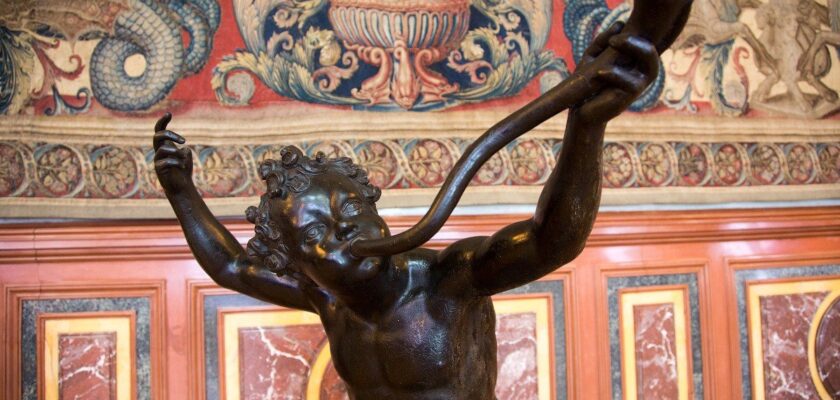State Hermitage
The Hermitage in St. Petersburg is a Russian museum complex of world significance, whose first buildings were laid out under Empress Elizabeth. To this day, the elegance and genius of the Hermitage is still admired by many modern experts. The foundations of the collection were gathered under Catherine the Great, and by her order separate buildings were built to store works of painting, sculpture and decorative and applied arts. Today’s complex includes five historic buildings on Palace Square, among which the Winter Palace is considered the main one, the Menshikov Palace on the University Embankment and the General Staff building.
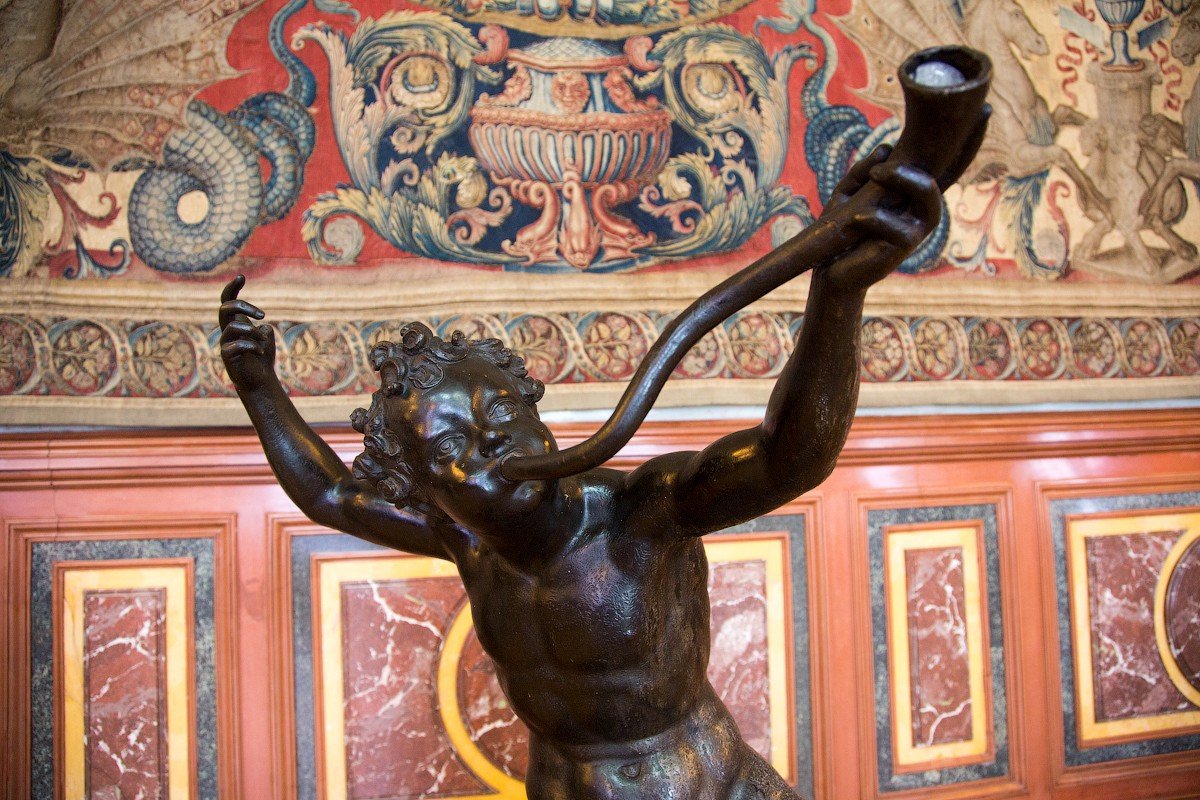
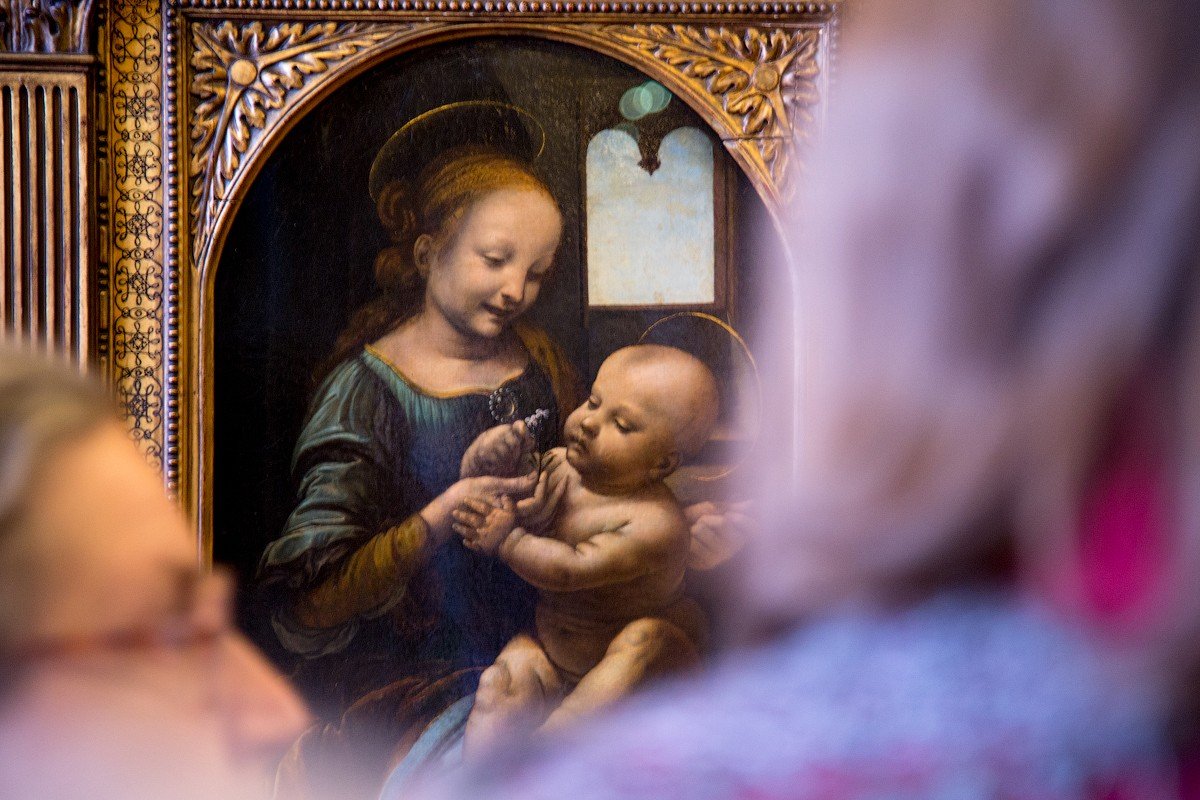
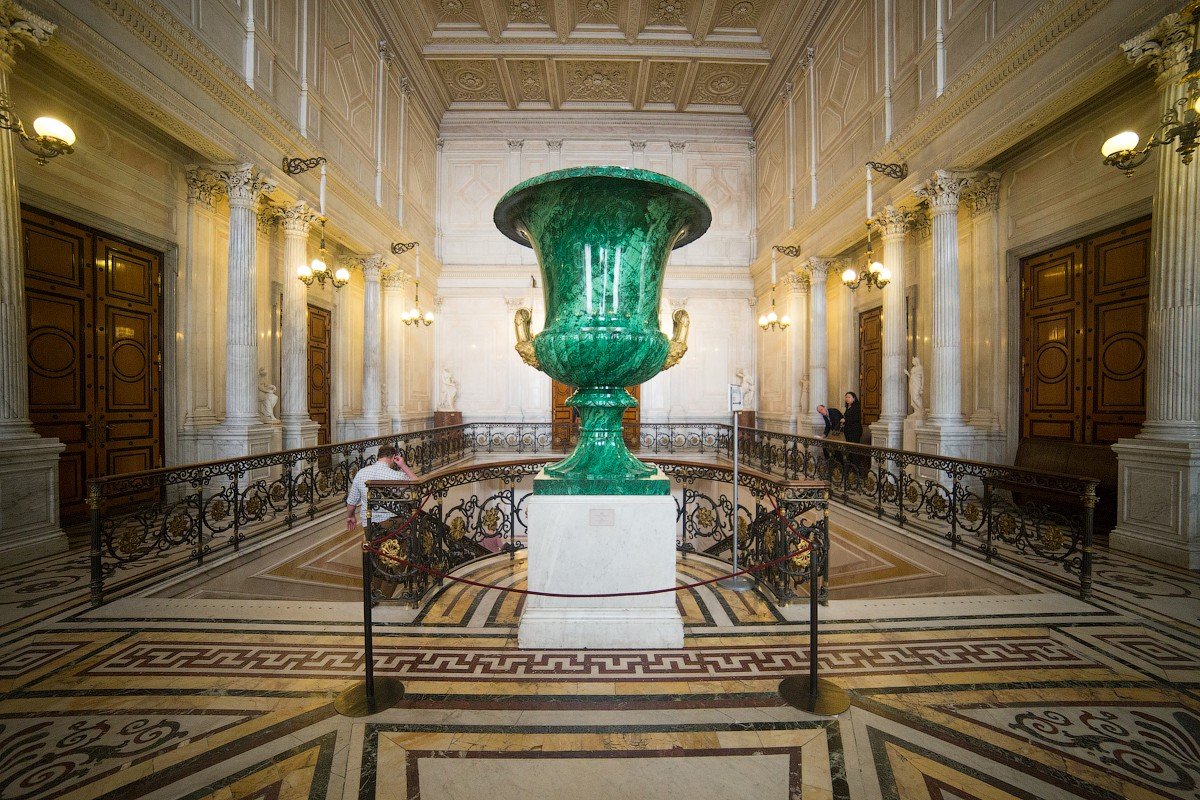
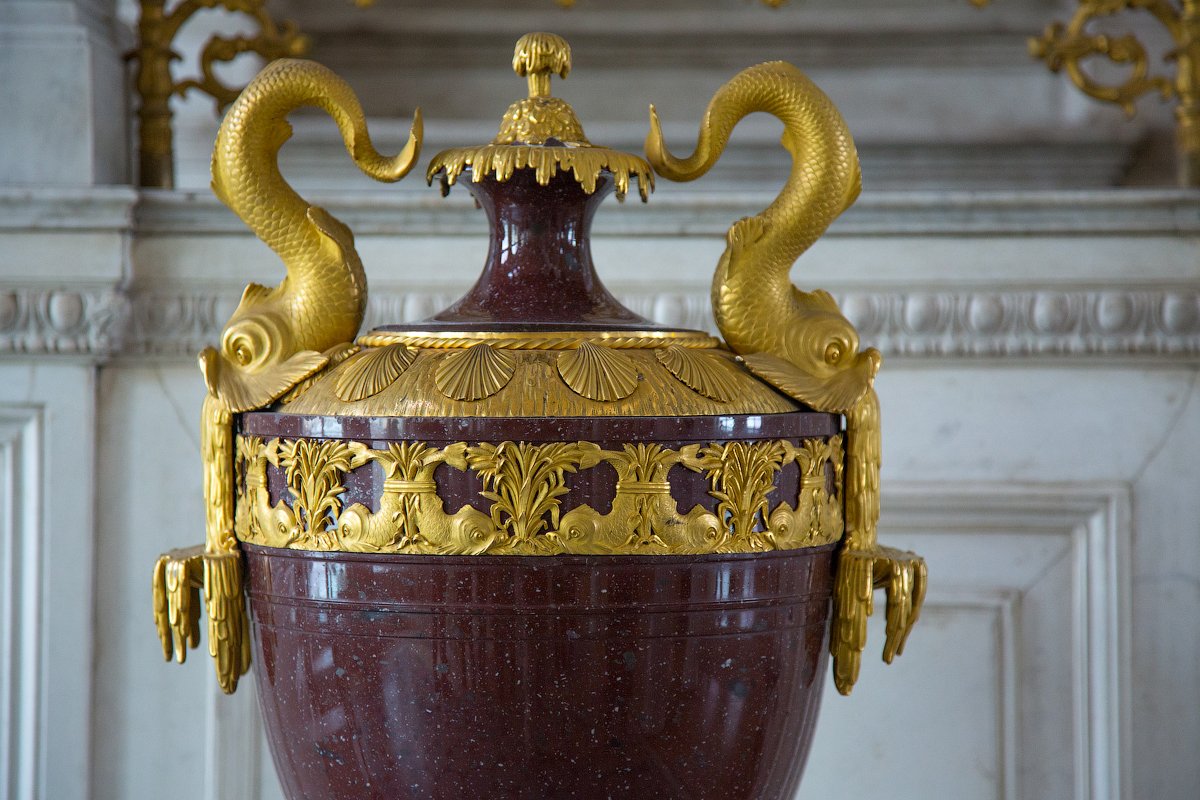
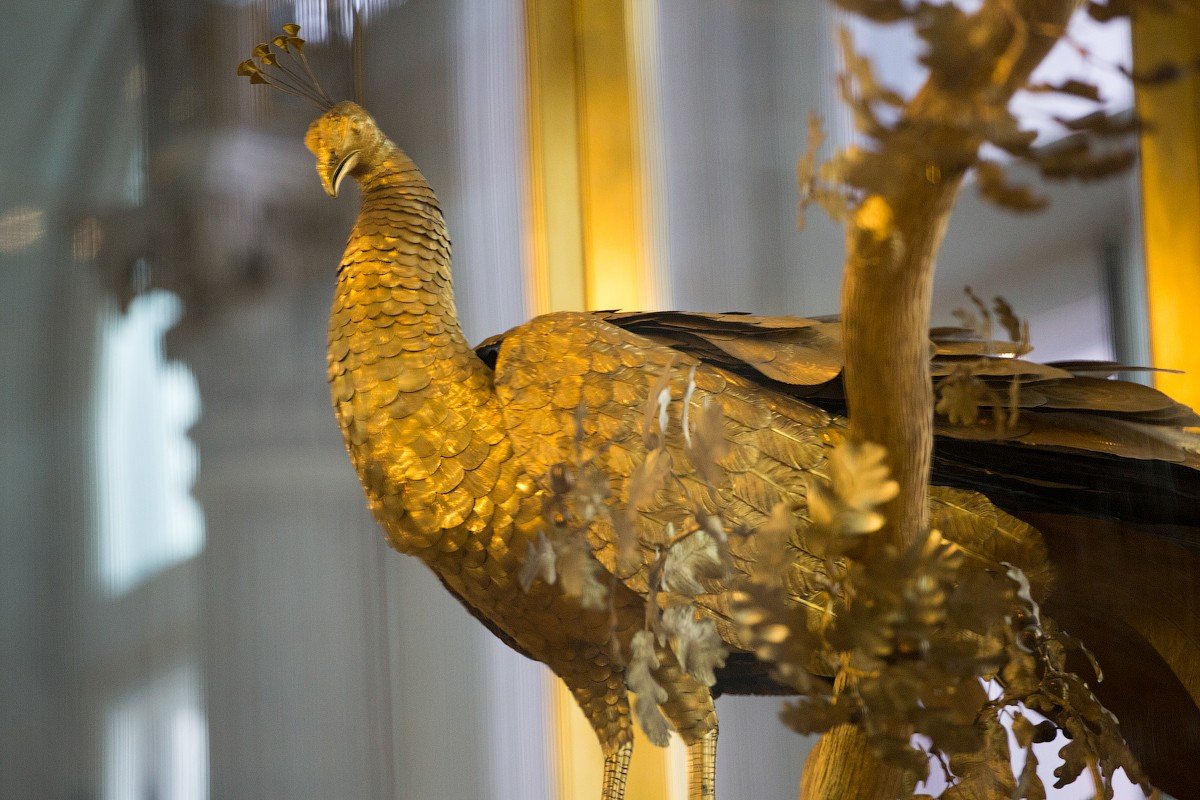
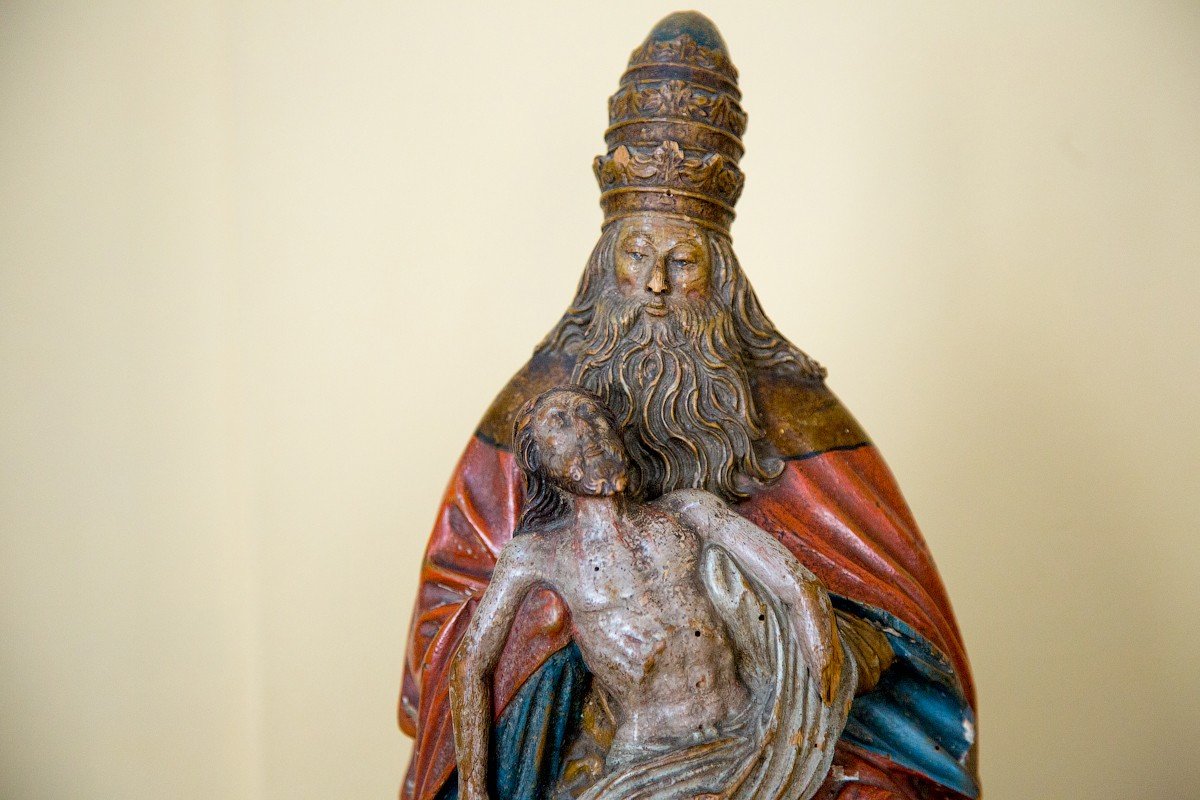
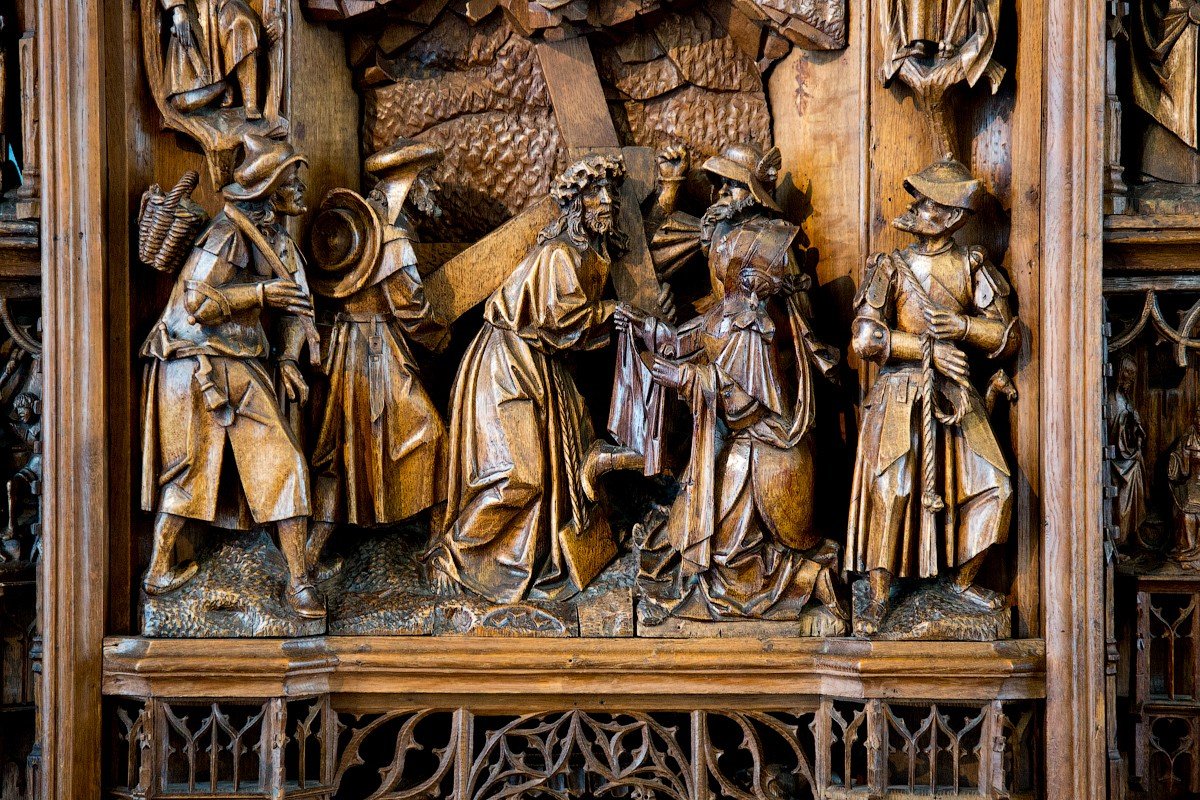
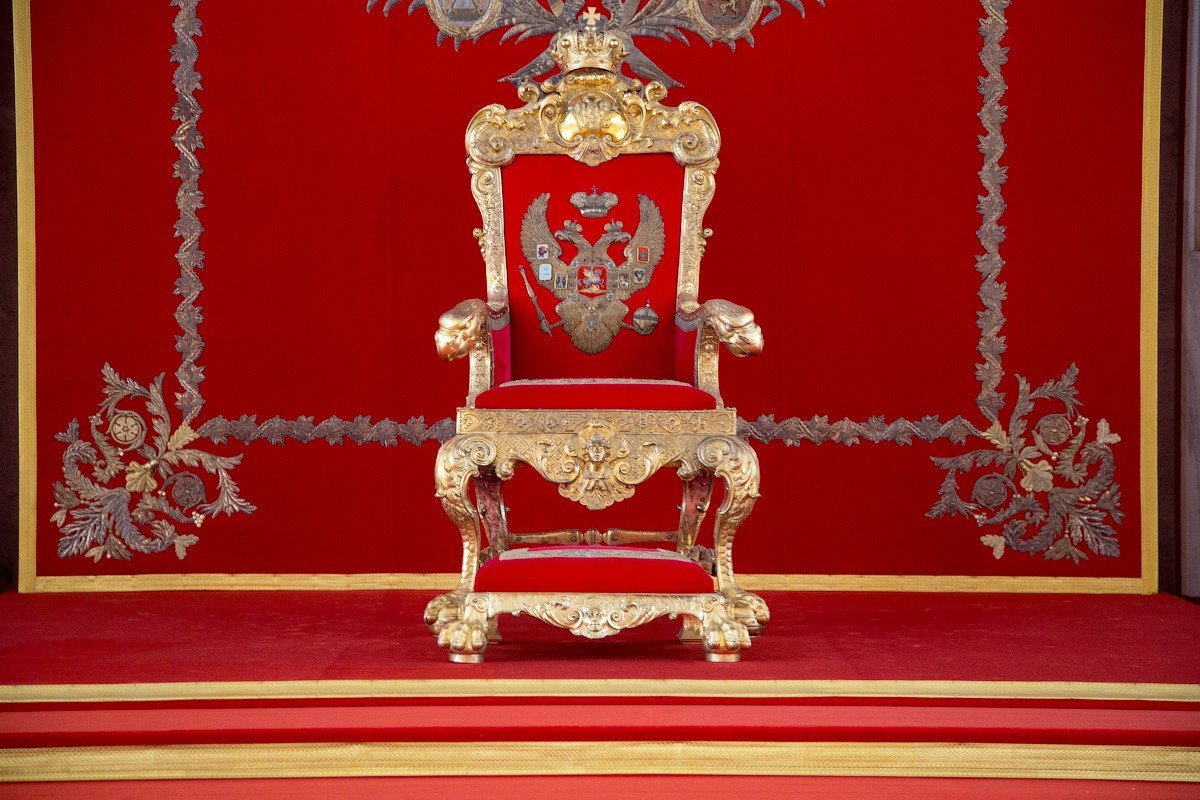
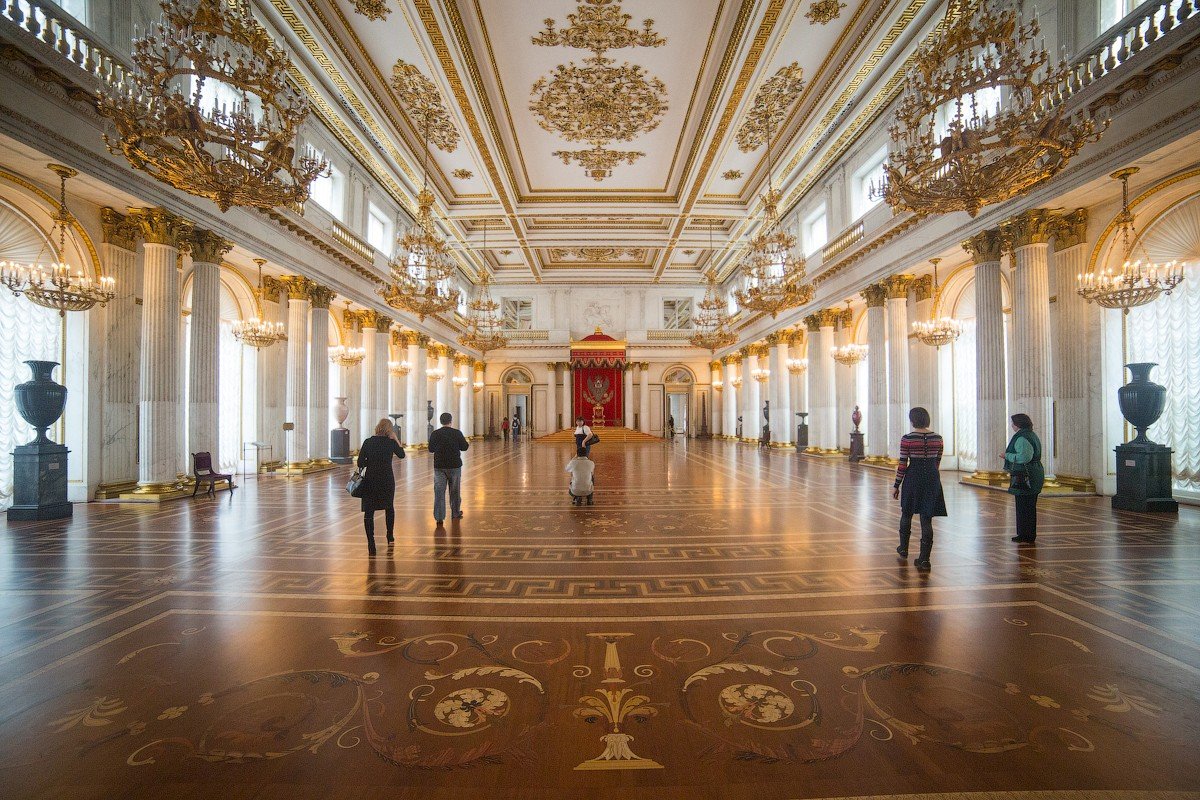

Video: The Hermitage
ContentsGeneral Information
The impression of a visit to the State Hermitage Museum is difficult to describe in words. From the very first steps on the solemn Jordan Staircase one is stunned by the luxury and splendor reigning here. Time itself seems to have frozen in the majestic halls among huge malachite vases, Egyptian sarcophagi, Greek amphorae, paintings by the greatest European painters and sculptures by the most famous masters. Here are kept such world-recognized masterpieces as “The Return of the Prodigal Son” by Rembrandt, “Madonna Litta” and “Madonna Benoit” by Leonardo da Vinci, “Madonna Connestabile” and “Holy Family” by Raphael, “The Lutenist” by Caravaggio, paintings by Titian, Murillo, El Greco and many other famous painters. The Hermitage Museum in St. Petersburg has one of the world’s finest collections of French painting from the late 19th to the early 20th century
.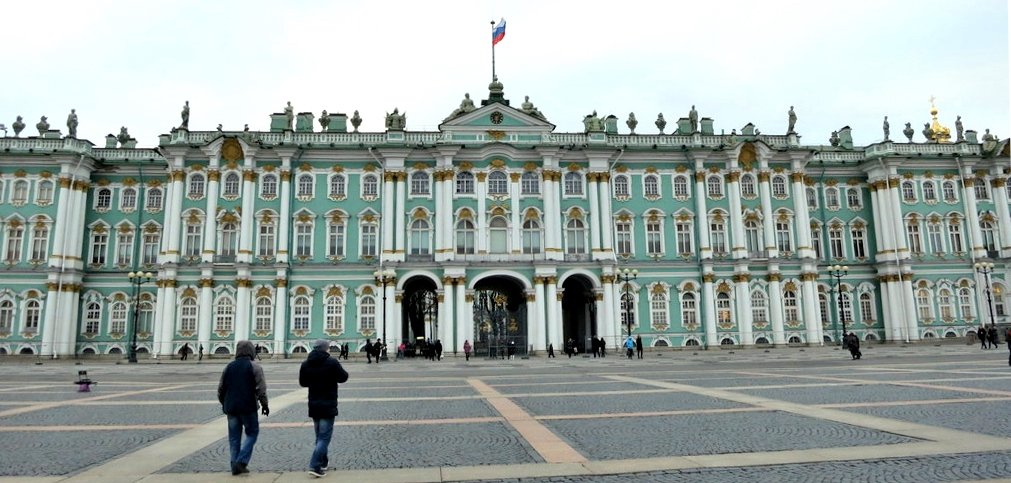
History of the Hermitage
The construction of the complex began with the erection of the Winter Palace in the mid-18th century, commissioned by Elizabeth. Architect Francesco Rastrelli worked on the building from 1754 to 1762. The original project was in the lush Baroque style, but much of the interior was later changed in accordance with the requirements of classicism.
.
Catherine II, who came to power shortly after the construction was completed, not only authorized the appearance of the Great and Small Hermitage and the Hermitage Theater, but also laid the foundation of the collection of the future museum in 1764. The first exhibits were Flemish and Dutch paintings by masters contemporary to the titular buyer. At the same time Yuri Felten built a two-story baroque-classicist house for the Empress’s entertainment. Five years later it was joined by a building designed by Jean-Baptiste-Michel Vallin-Delamotte, to which it was connected by a gallery of hanging gardens. The ensemble was called the Small Hermitage.
.In 1771-1787 on the banks of the Neva River, the Great Hermitage was built according to Felten’s design, as the collections of books and paintings had grown and could not fit in the old premises. Five years later Giacomo Quarenghi, the creator of the Hermitage Theater, completed the annex to it. Under Catherine, works by major Italian masters, Rembrandt were added to the museum’s holdings, and the magnificent St. George Hall was decorated on the second floor of the Winter Palace.
.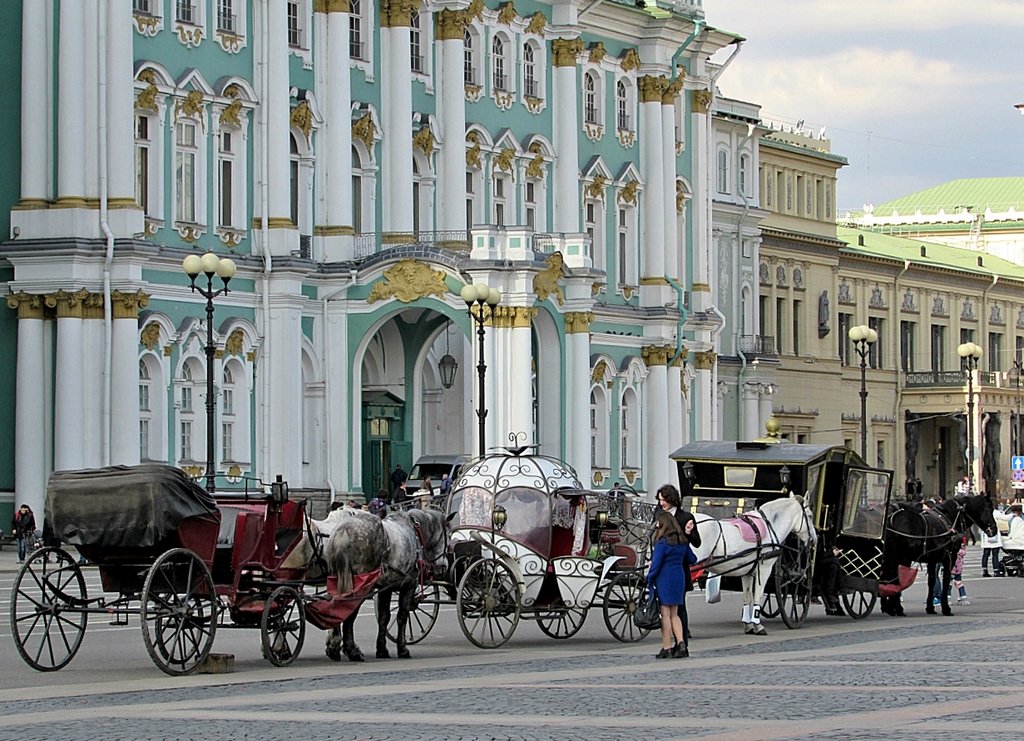
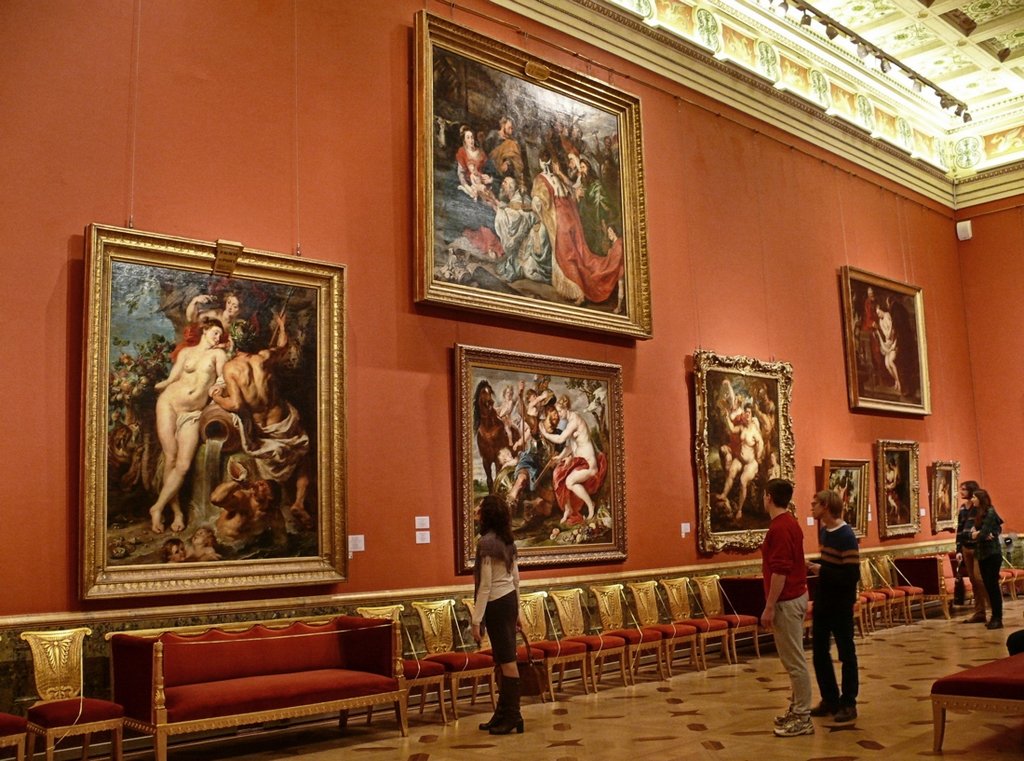

The Hermitage in the 19th century
After the end of the war with the French, the Hermitage inherited the collection of Josephine Beauharnais, Napoleon’s wife. The Patriotic War of 1812 left an imprint on the Hermitage: during the reign of Nicholas I everything was done to immortalize the memory of the heroes of the battles. Portraits of military leaders and reliefs with patriotic symbols appeared in the halls of the complex.
.
During the Nicholas period, Alexander Bryullov, brother of the famous painter, worked on the interior decoration of the Hermitage. He decorated the interiors of the Winter Palace and, together with Vasily Stasov, restored the Petrovsky and Field Marshal’s Halls after the devastating fire of 1837.
.
In 1852, a group of architects built the New Hermitage specifically for the painting collections, embodying the main details of the German Leo von Klenze’s design. Andrei Shtakenshneider worked on the interiors of the Great Hermitage and the Winter Palace at this time. In the 60s and 80s, the museum’s collections were enriched with works by Leonardo da Vinci, Raphael, samples of European decorative and applied art, and a collection of weapons from the Tsarskoye Selo Arsenal was transferred here.
.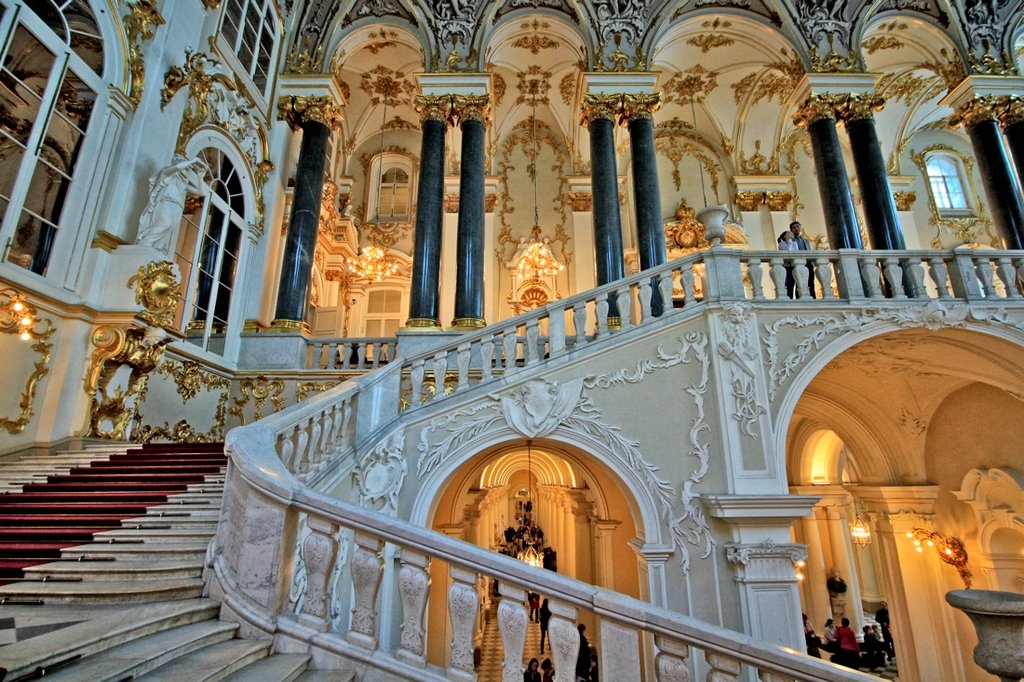
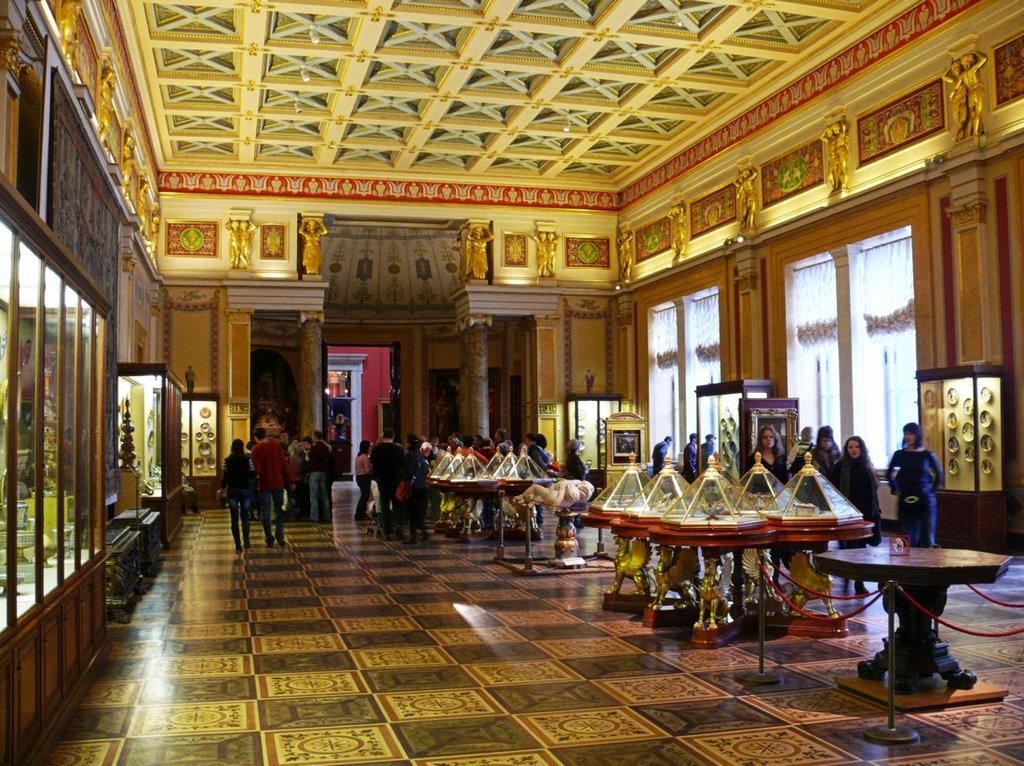
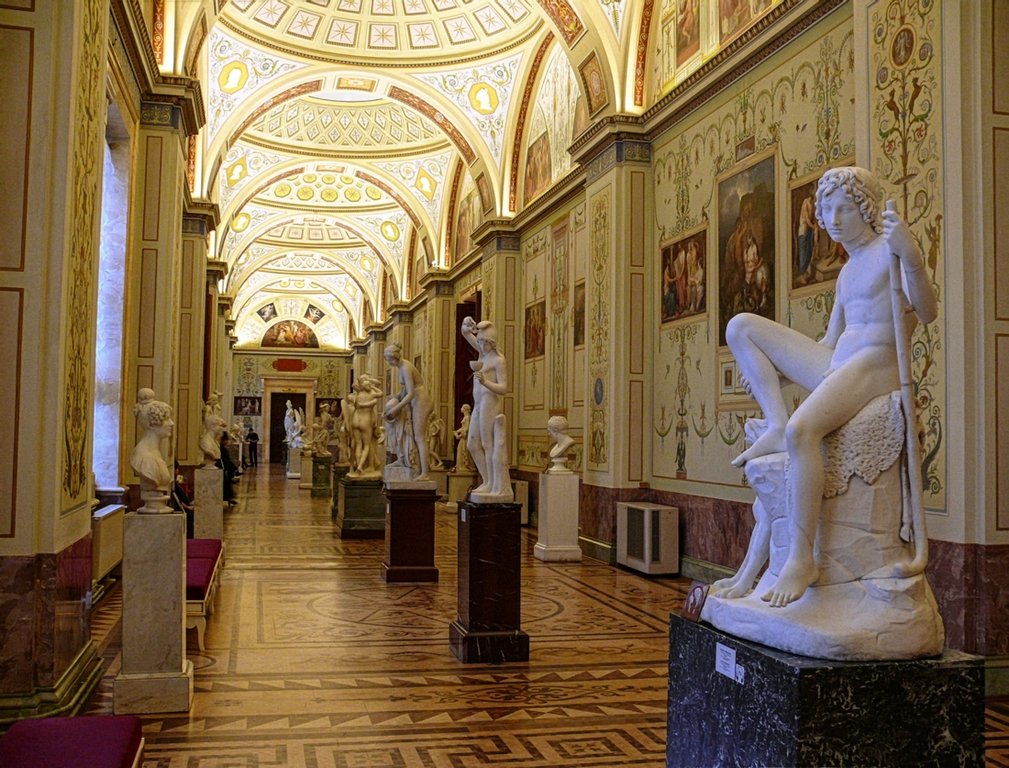
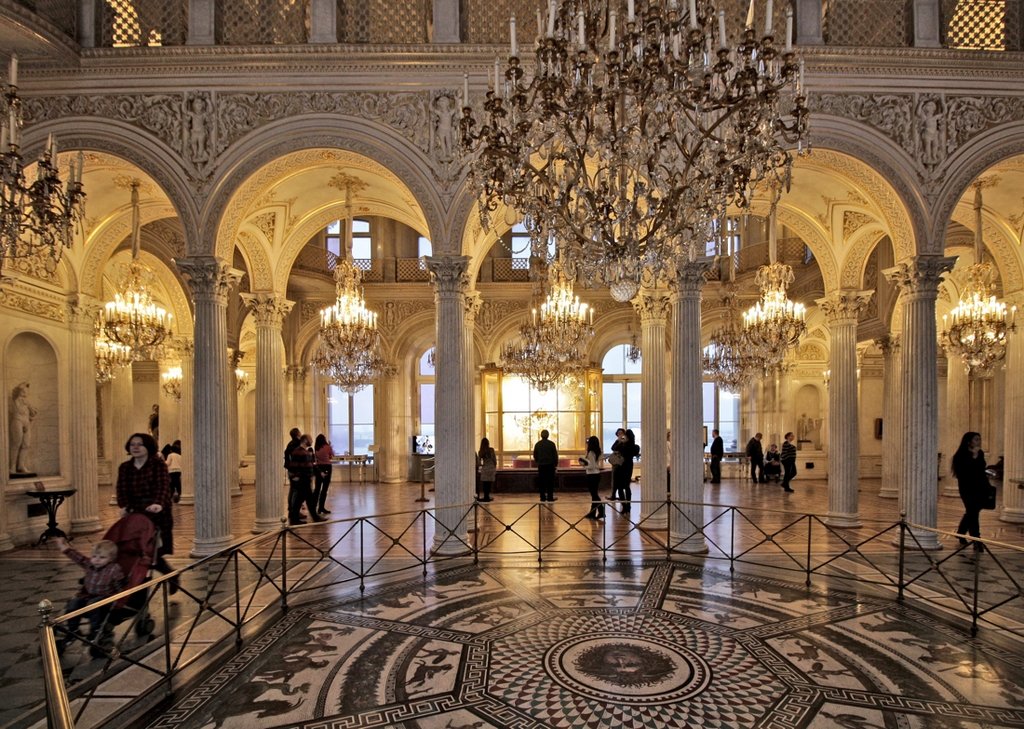
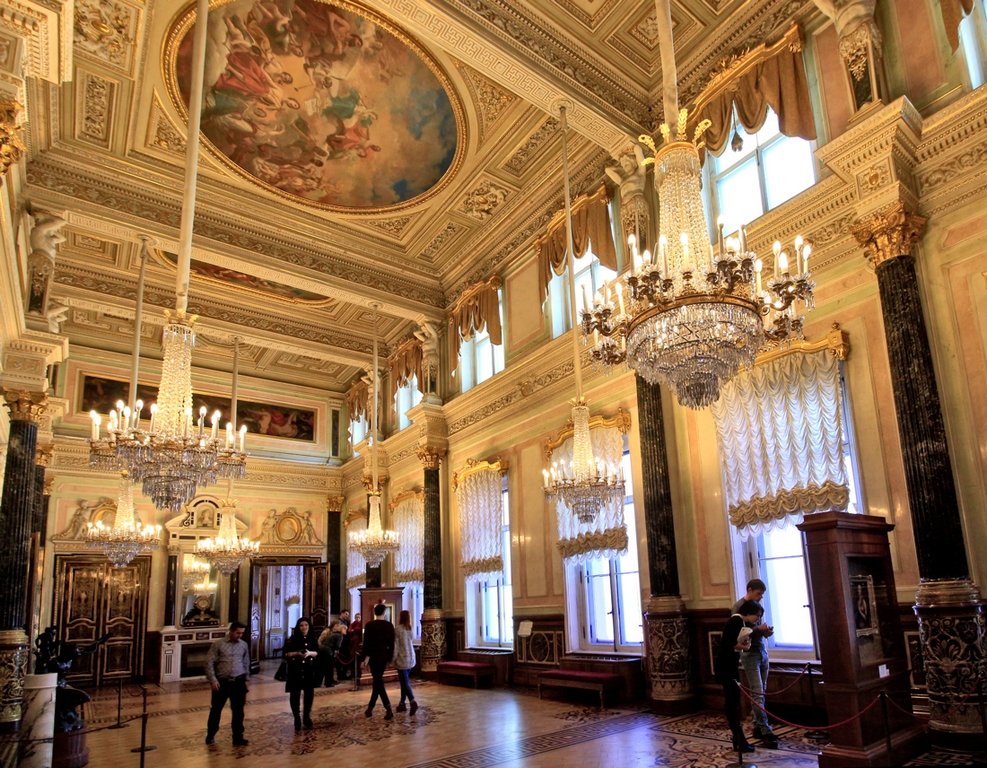
History of the complex in the 20th century
During World War I, a hospital was organized in the Hermitage. After the February Revolution, the Provisional Government met here and was arrested right in the palace during the Bolshevik coup. On November 12, 1917, the Hermitage became a state museum. Before World War II, the collection grew significantly due to the nationalization of private collections and the merger of different museums, valuable exhibits came from the Union republics. During the war the collection was evacuated to Sverdlovsk, since November 1945 everything has been returned to its place again.
.
Since 1981, visitors to the Hermitage in St. Petersburg began to receive visitors to the Menshikov Palace with an exhibition devoted to the culture and life of Petrine times. The “Winter Palace of Peter the Great” opened in the Hermitage Theater in the 1990s. Part of the expositions moved to the General Staff.
.
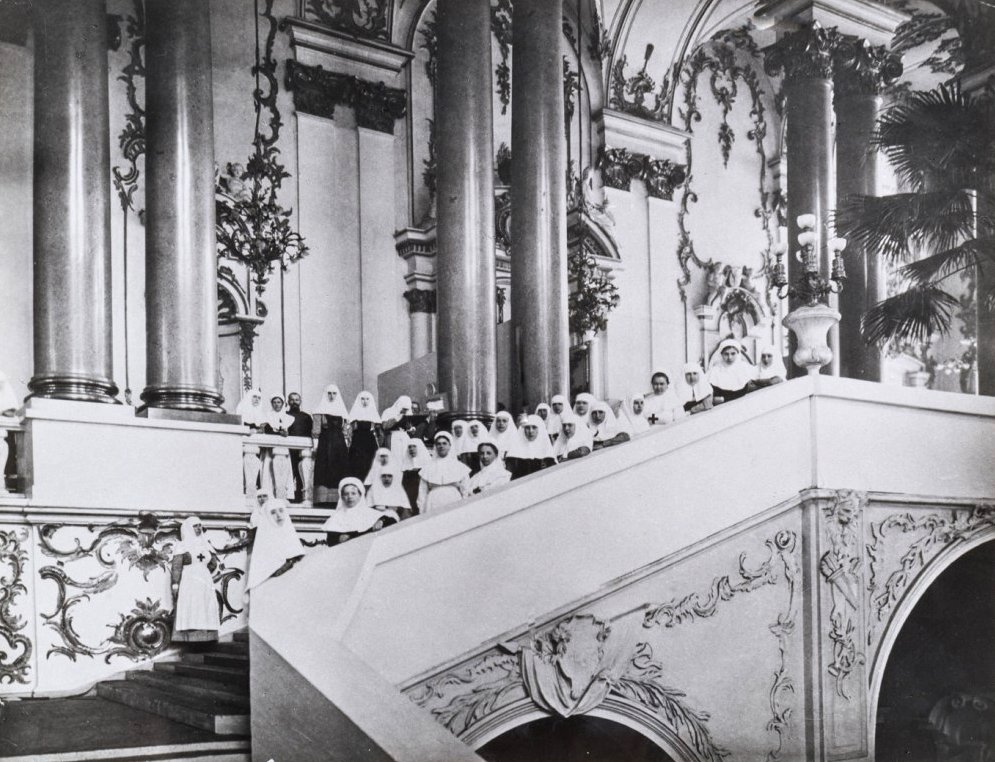
Current state
In the 21st century, the State Hermitage opens its representative offices abroad and in Russian regions: these include exhibition centers in London and Las Vegas, Amsterdam, Kazan, Ferrara, and Vyborg. The Grand Parade Courtyard is being reconstructed and a new entrance to the Hermitage is being opened. The collection of the Lomonosov Porcelain Factory Museum is taken over by the complex.
.Museum Collections
It is physically impossible to see the entire collection in one visit, so visitors are encouraged to develop their own routes according to their interests. From an architectural point of view, the interiors of the Winter Palace are the most attractive, while the picturesque masterpieces are concentrated in the halls of the Great and New Hermitage.
>Winter Palace
The main exposition of the first floor of the Winter Palace is ancient art and archaeology, the second floor – paintings of England and France of the XVI-XVIII centuries and interiors of various epochs, the third floor – classical art of Asian countries. The halls of the second floor deserve special mention: the Throne Room, the Alexander Room, the Great Hall, the Concert Hall, the chamber rooms of Empress Maria Alexandrovna and the family of the last Emperor.
.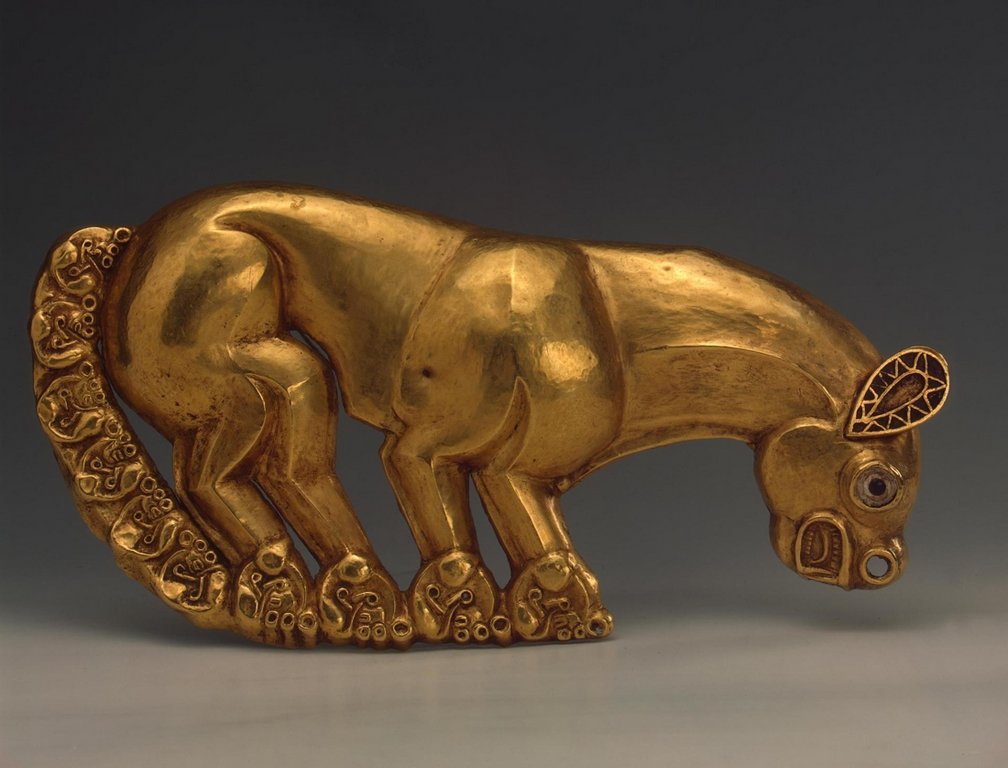
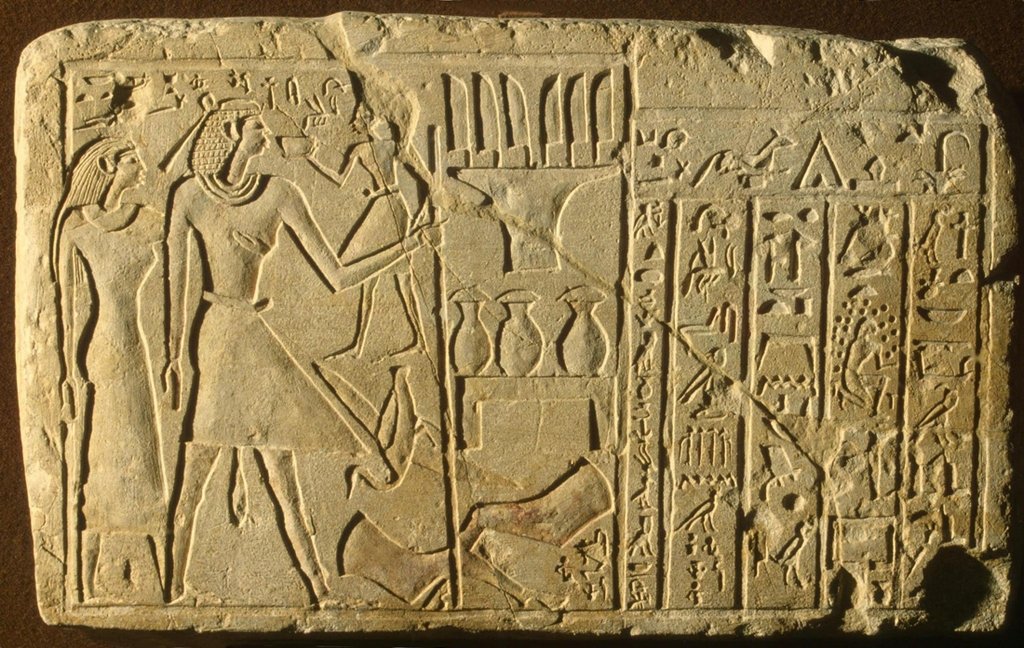
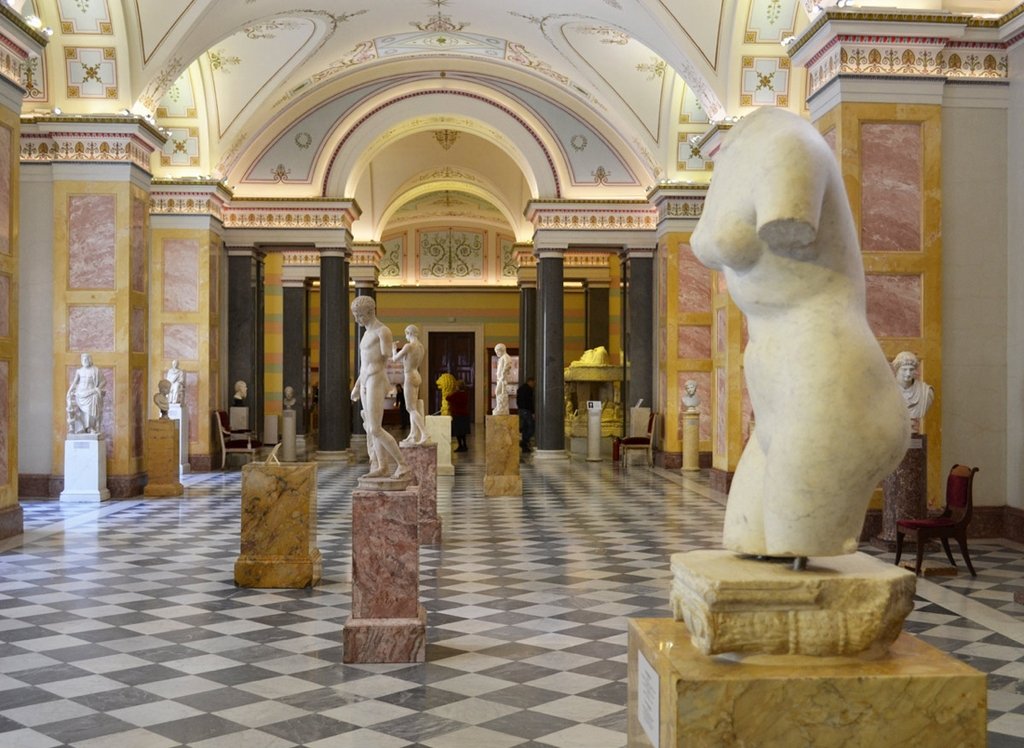

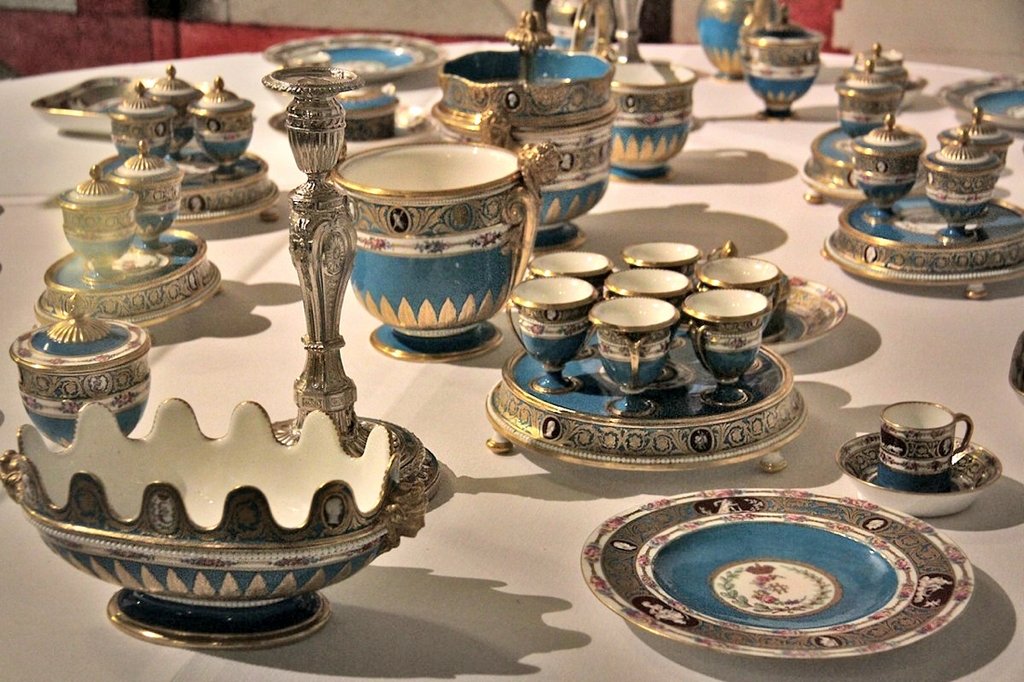

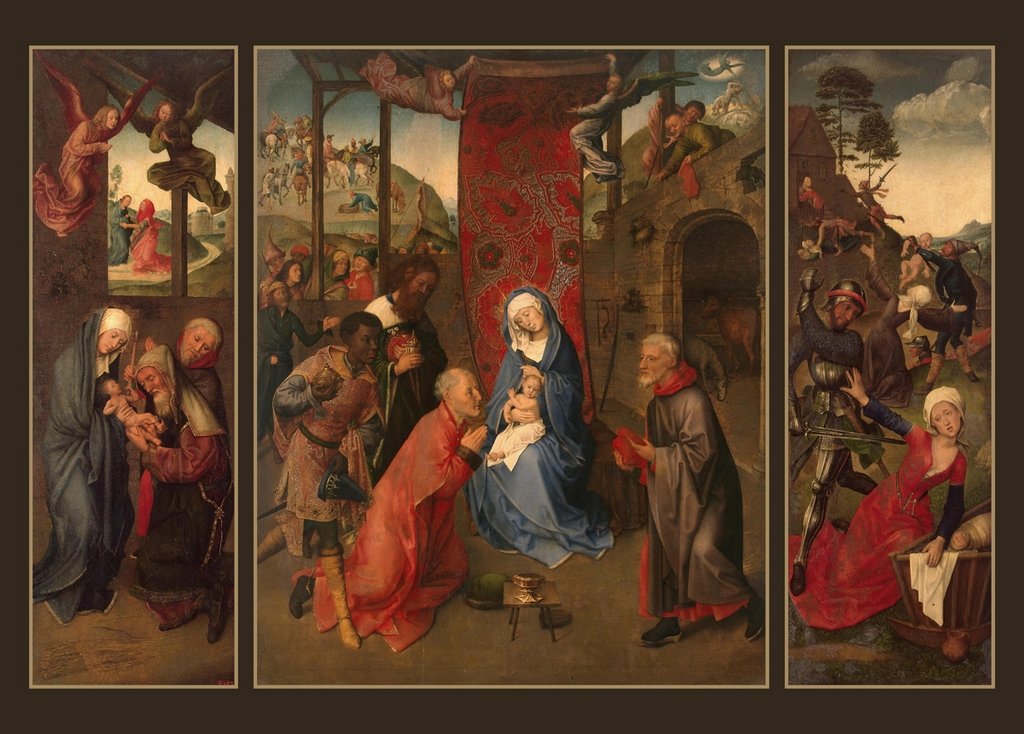
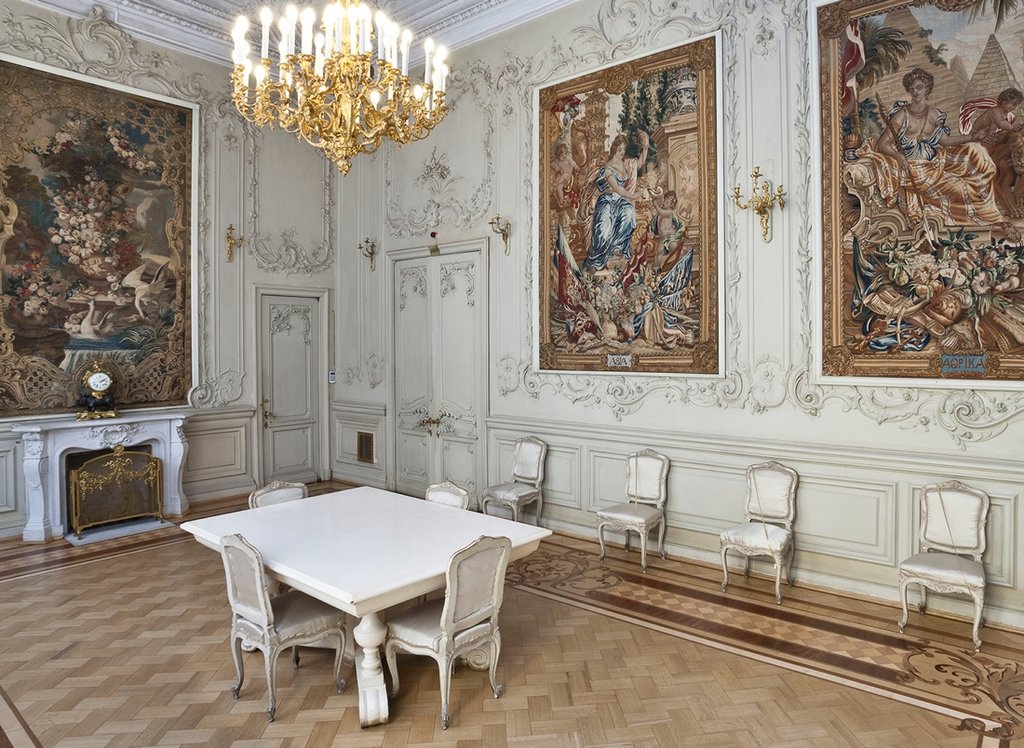
Small Hermitage
The building is connected to the Winter Palace by the Sivkov passage with an area where ancient Roman mosaics, sarcophagi and reliefs are kept. The name of the hall immortalizes the name of Alexander Sivkov, an architect of the Hermitage during the Soviet period who united all the buildings into a common museum space. The Pavilion Hall, whose windows overlook the Neva River, was decorated in the mid-19th century by Stakenschneider, who spared no expense in gilding and crystal for the walls and ceiling. Four copies of the Bakhchisarai Fountain, mosaics and the Peacock clock are exhibited here. The bronze clock automaton made by English masters of the XVIII century still functions – its “singing” can be heard every Wednesday at 19 o’clock. The Romanov Gallery, on the side of the Winter Palace, houses medieval exhibits decorated with enamels, wood and ivory carvings, and earthenware. The gallery leads visitors to the hall of Dutch and Flemish paintings. The opposite Romanov Gallery, the Petrov Gallery, houses German paintings and sculptures from the 15th through 18th centuries.
.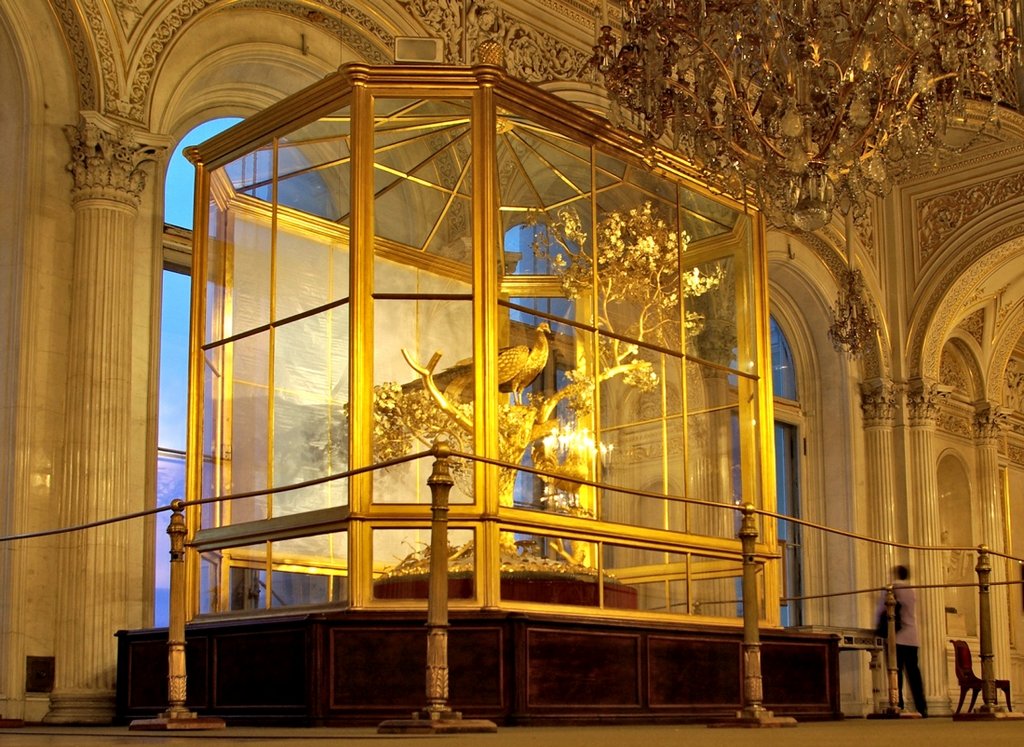
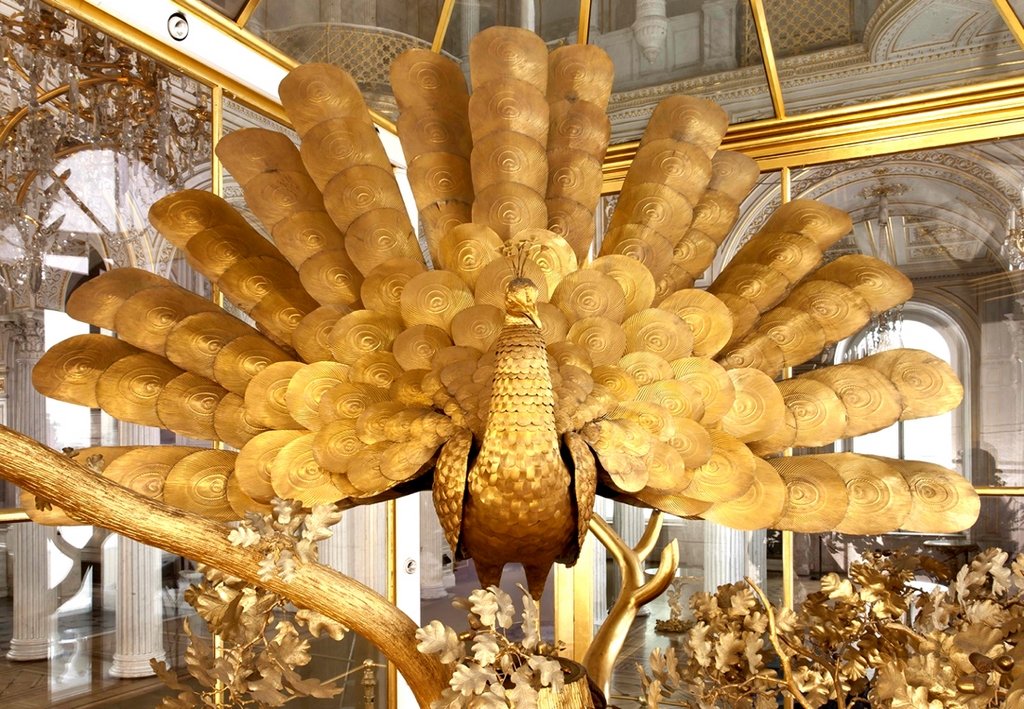

The Old (Great) Hermitage
The Soviet staircase of white and pink marble leads from the first floor of the Old Hermitage to the second, exhibition floor. It was built according to the design of Shtakenshneider in the mid-19th century on the site of the former Oval Hall, from which a spirit-lifting plafond with images of the goddess Minerva and Russian youth remained. The name, contrary to popular belief, has nothing to do with the USSR: this building was still home to the State Council in the 19th century.
.The Great Hermitage is not large at all compared to the imposing Winter Palace and the New Hermitage. The modest volumes are compensated for by the value of the collections – it is here, in the Nevsky Enfilade, that masterpieces of the Italian Renaissance are kept: frescoes by Fra Beato Angelico, reliefs by Antonio Rossellino, Sandro Botticelli’s altarpiece, Pietro Perugino’s St. Sebastian, Veronese’s The Lamentation of Christ, and Tintoretto’s St. George. The Leonardo da Vinci Hall reproduces French interiors of the XVII century. The famous Leonardo’s “Madonna of Benoit” and “Madonna Litta” are exhibited here. Titian’s “Danaë” and “St. Sebastian” can be seen in the hall.”
.’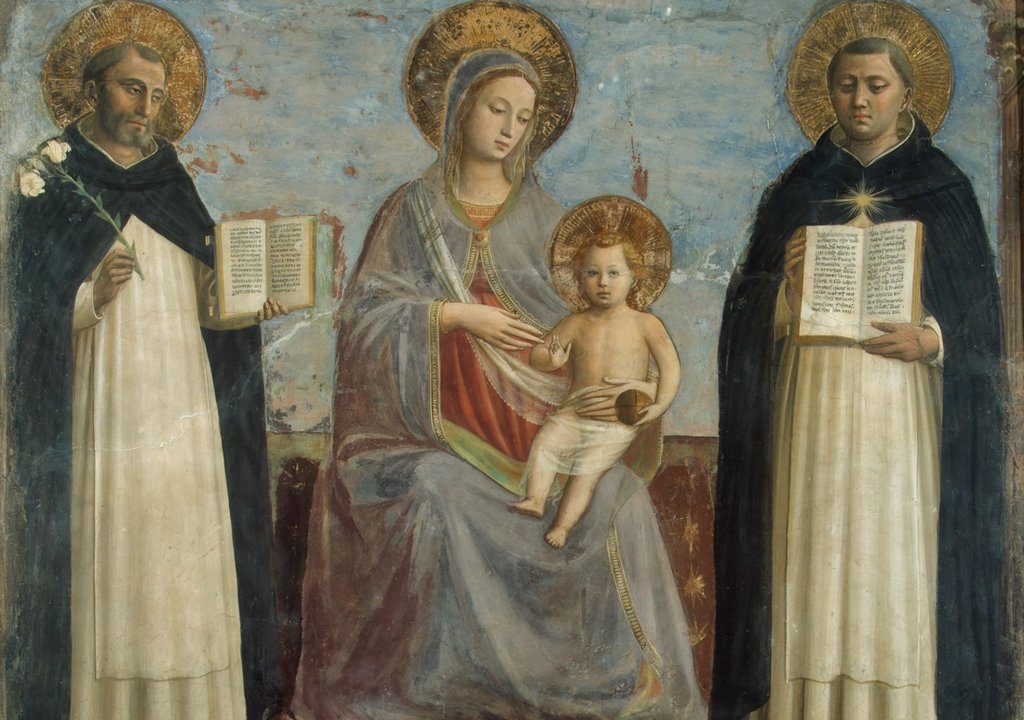
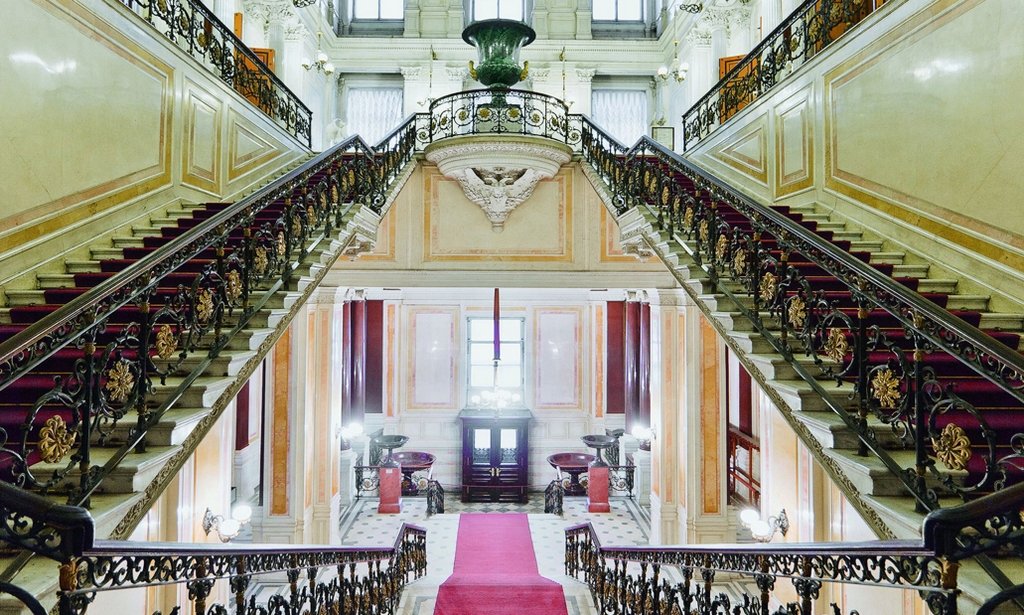

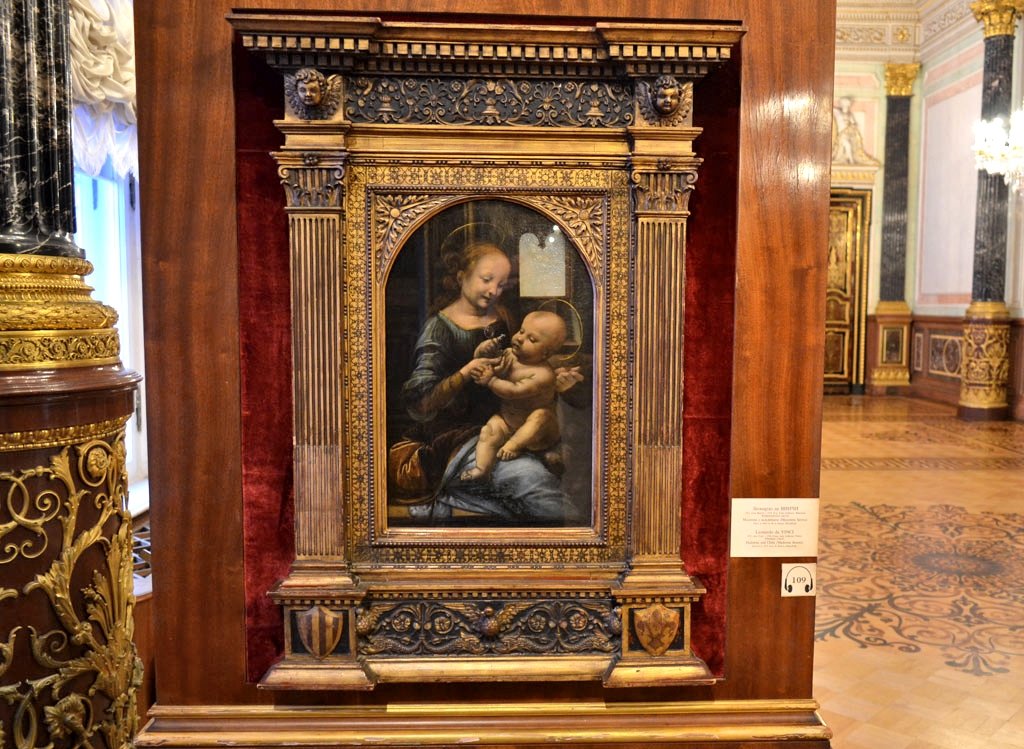
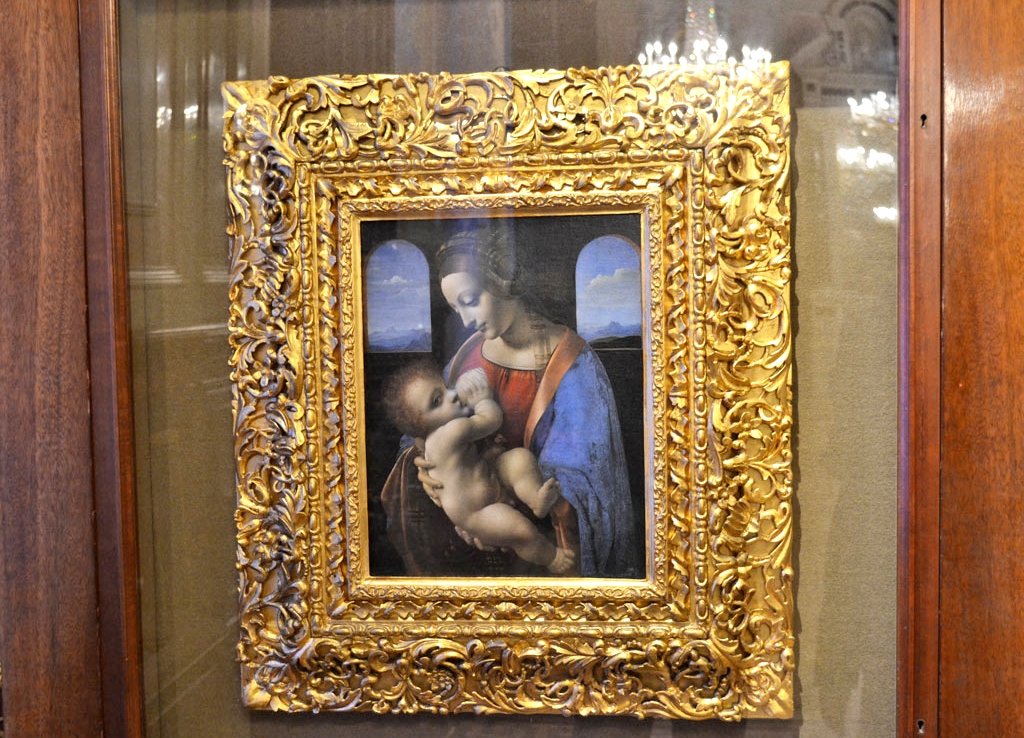
New Hermitage
Since there was no more suitable space left on the Neva river embankment, the main facade of the New Hermitage faces Millionnaya Street. It is decorated with the famous powerful granite figures of Atlanteans by sculptor Terebenev. It is about them that Alexander Gorodnitsky sings in his famous song:
.When there is heaviness in the heartAnd cold in the chest,To the steps of the HermitageYou come in the twilight,Where without drink and bread,Forgotten in the ages,Atlanteans hold the sky,
.’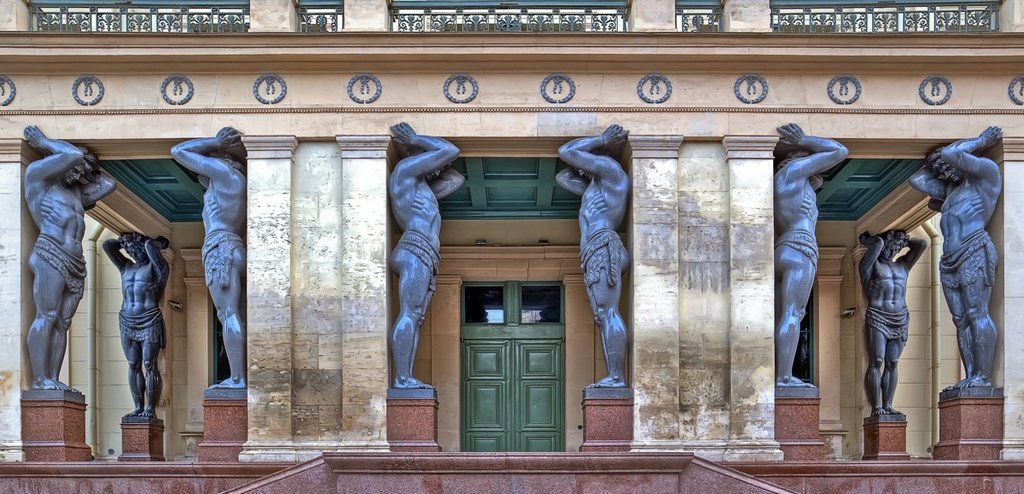
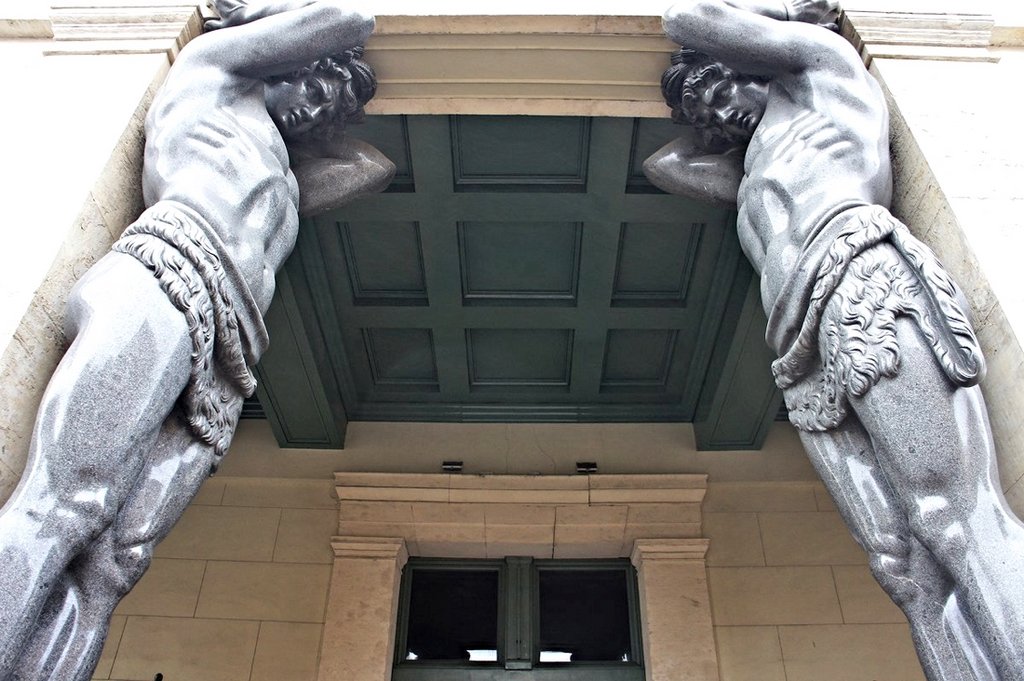
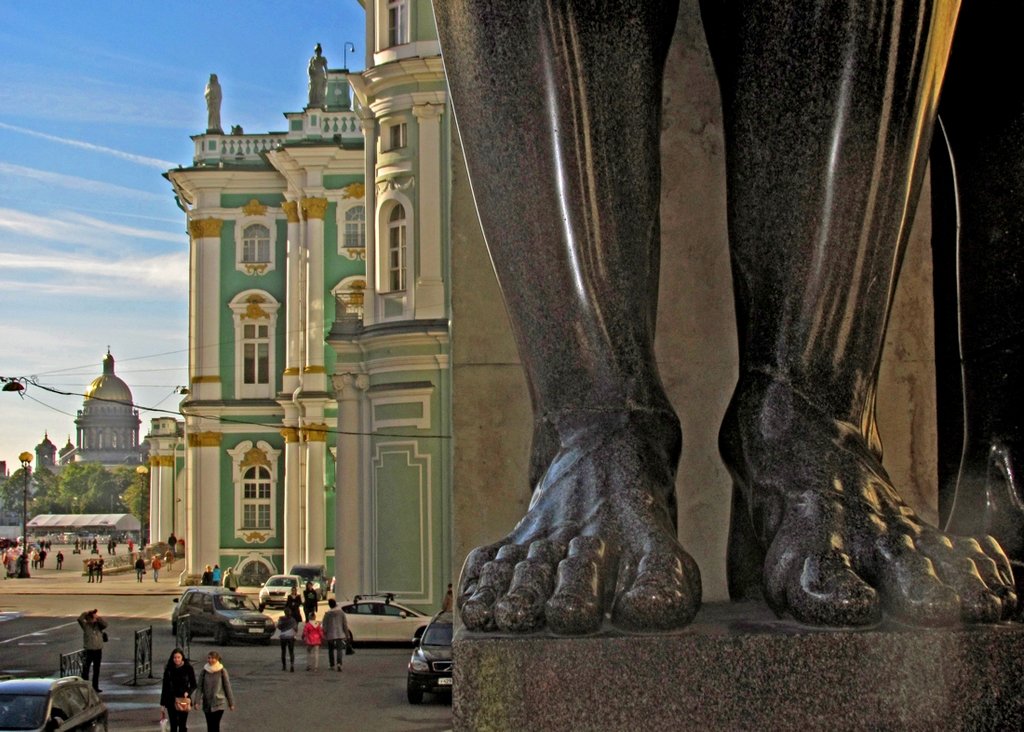
Leo von Klenze’s project envisioned complete harmony between the exhibits and the design of the walls, ceilings, and parquet. That is why many halls are decorated with medallions, mosaics in the style of various historical epochs. On the first floor of the building samples of antique art are presented. The main staircase made of white marble surrounded by granite columns leads to the exhibition halls. The oldest finds are located in the colorful Twelve-Column Hall with mosaic floors, wall paintings imitating ancient Roman ones, and green granite columns.
.In the center of the Great Vase Hall stands the 19-ton Kolyvan vase made in 1843 from greenish-gray jasper. Marble sculptures from the era of Emperor Trajan are arranged around the perimeter of the room. In the vaulted hall of Jupiter a huge statue of the Thunderer, taken from the country house of Emperor Domitian, is exhibited. The antique courtyard with statues reproduces the decoration of the houses of noble Romans and Greeks. Marble figures also decorate the hall of Dionysus. In the Greek halls of the Classical period are copies of works by famous sculptors: Fidius, Myron, Polyktetus, authentic vases.
.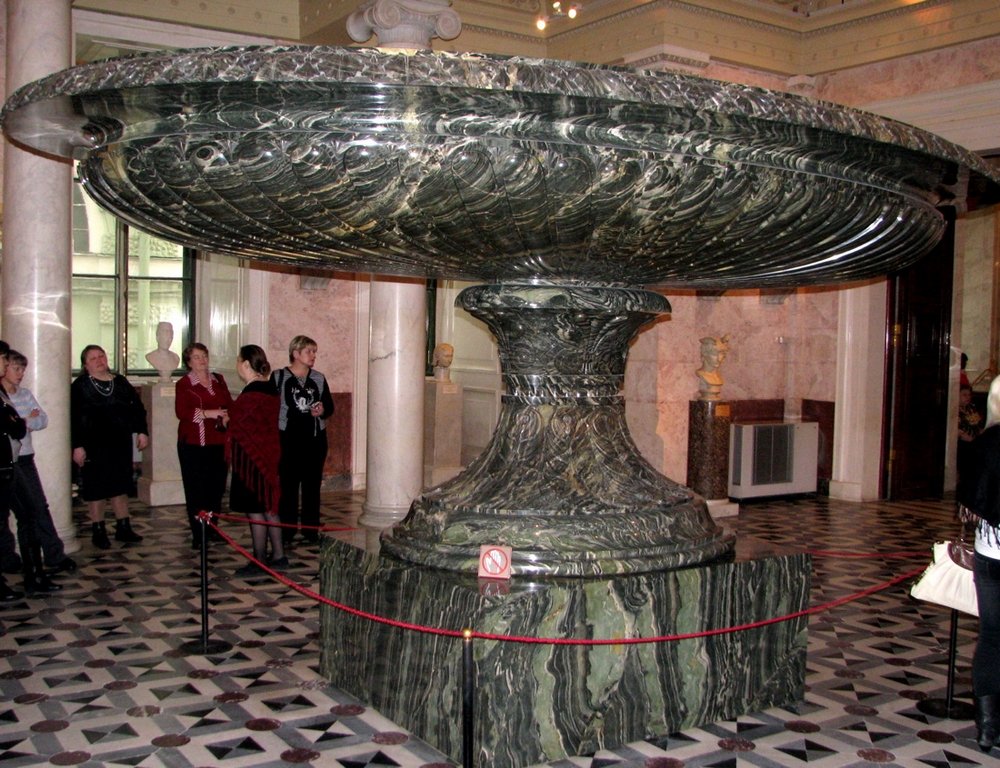
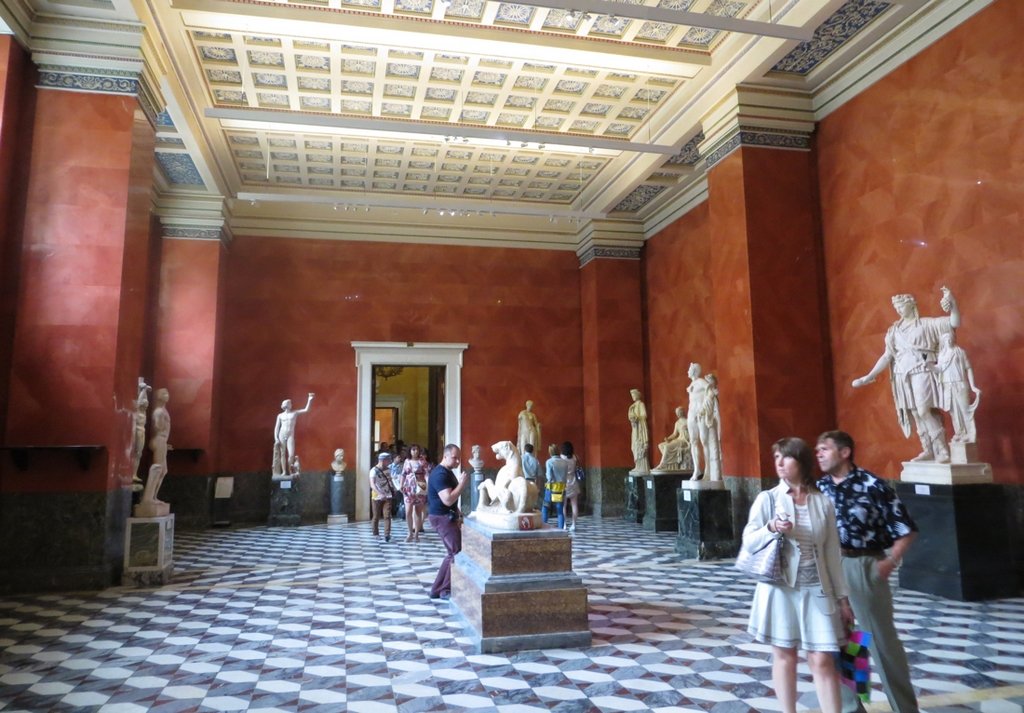

The second floor of the New Hermitage houses the most valuable painting collections. The Rembrandt Hall contains 23 works by the Dutch master, including “The Return of the Prodigal Son” and “Danaë”, which was protected after a vandal’s attack with particularly strong glass. The Raphael Hall features Italian ceramics, works by the famous painter’s pupils and his masterpieces “Madonna Conestabile” and “The Holy Family.”
The center of the building is formed by an enfilade of three halls with overhead lighting, the so-called “prosceniums”. The Small Italian Proscenium is decorated with colored stucco and works by Russian stonecutters. The Great Hall contains large-format paintings by Italian artists and original furniture made according to the sketches of Montferrand and von Klenze. The Spanish Room exhibits works by Velázquez, Surbaran, and Murillo.
.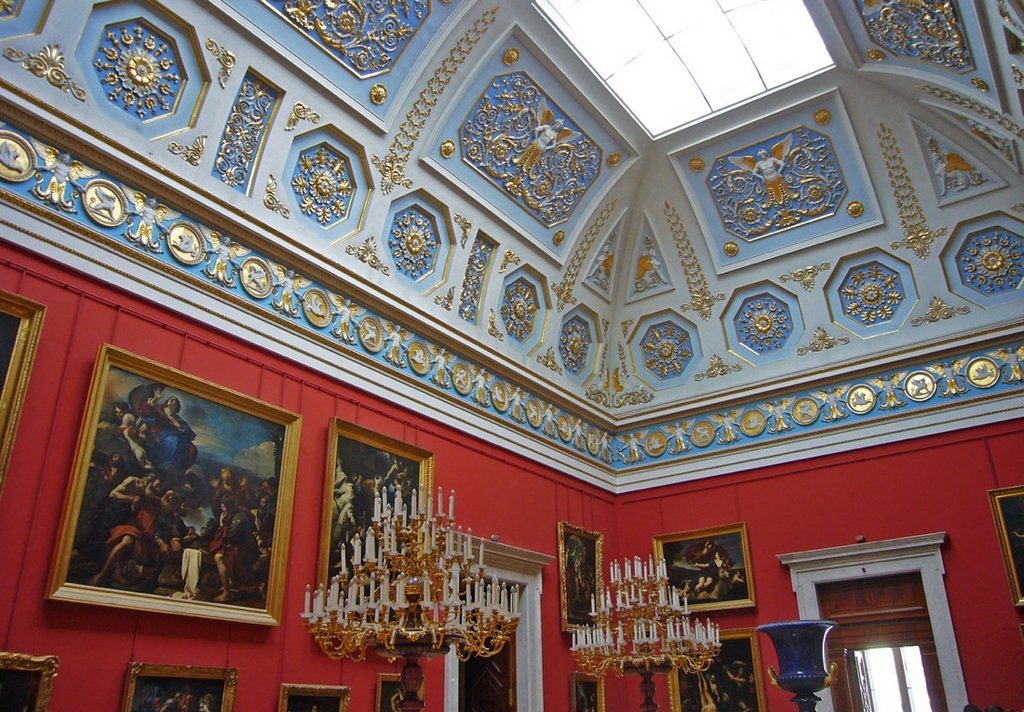
Hermitage Theater
The building was erected on the site of the former Winter Palace of Peter the Great. The architects managed to restore part of the basement and first floor in the rooms under the stage. The study, dining room and the front yard with Peter the Great’s sleigh can be viewed from the Palace Embankment.
.The interior of the theater lobby is kept in grayish-blue tones, emphasizing the opulence of heavy chandeliers, the delicacy of medallions, moldings and ceiling paintings. In the auditorium, as in an ancient amphitheater, 6 semicircular rows of benches are installed. Here, in acoustic conditions ideal for chamber opera, performances and concerts are held by the company’s own orchestra and singers invited from the Mariinsky Theater.
.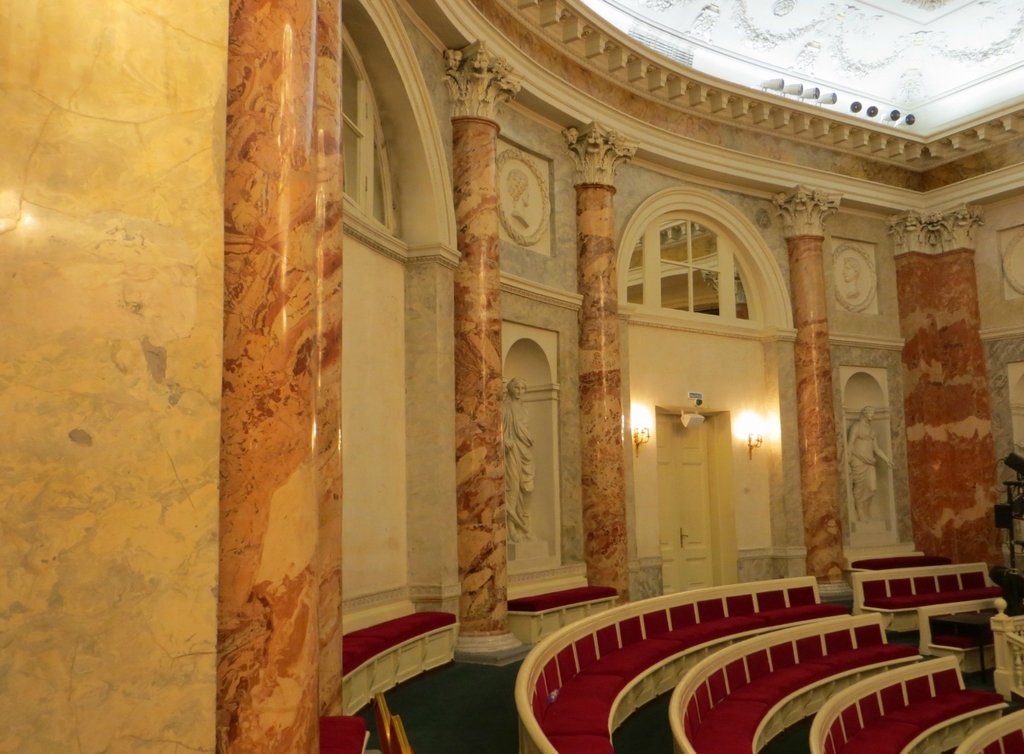

Menshikov Palace
The Baroque building, St. Petersburg’s first capital structure made of stone, stands on the Universitetskaya Embankment. While Menshikov was in power, the palace, the center of the vast estate, was the main entertainment venue for the Tsar’s court. Subsequently, the unclaimed building became dilapidated to such an extent that in the twentieth century reconstruction stretched over several decades. Some rooms have not been restored to this day. After the building was handed over to the Hermitage in 1981, it was decided to recreate the interiors of the first third of the 18th century – the enfilades of the state rooms, the Walnut Cabinet.
.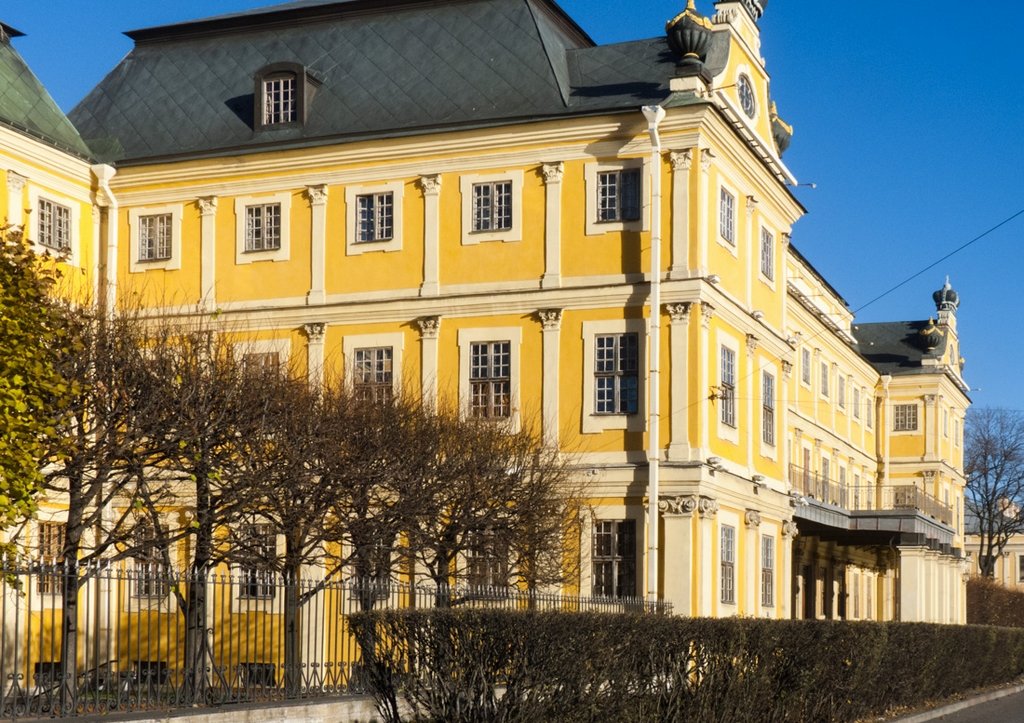
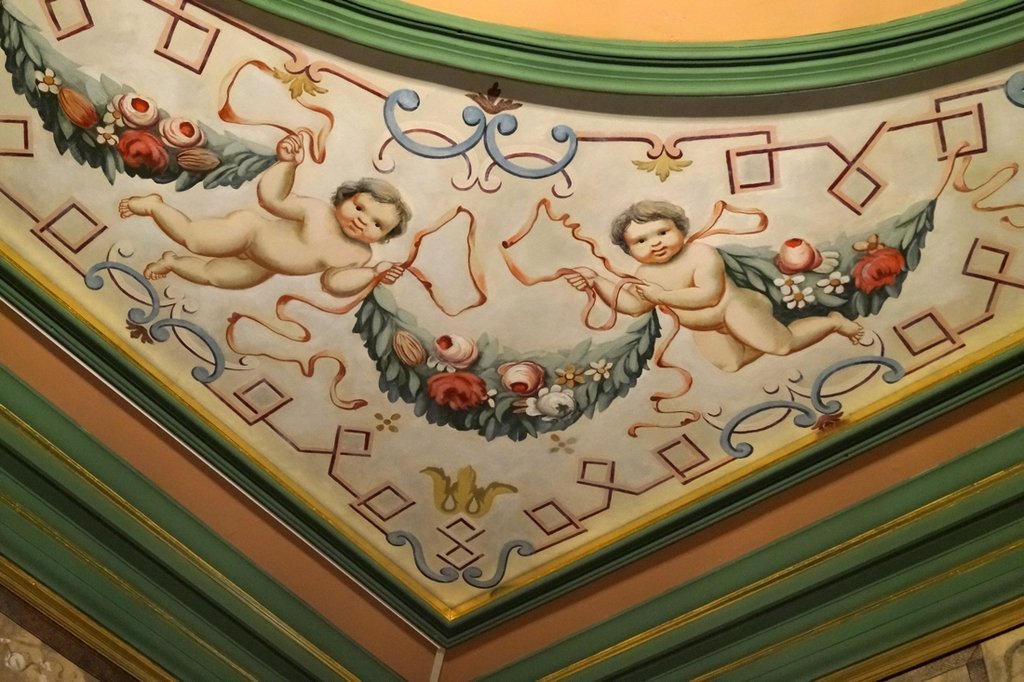
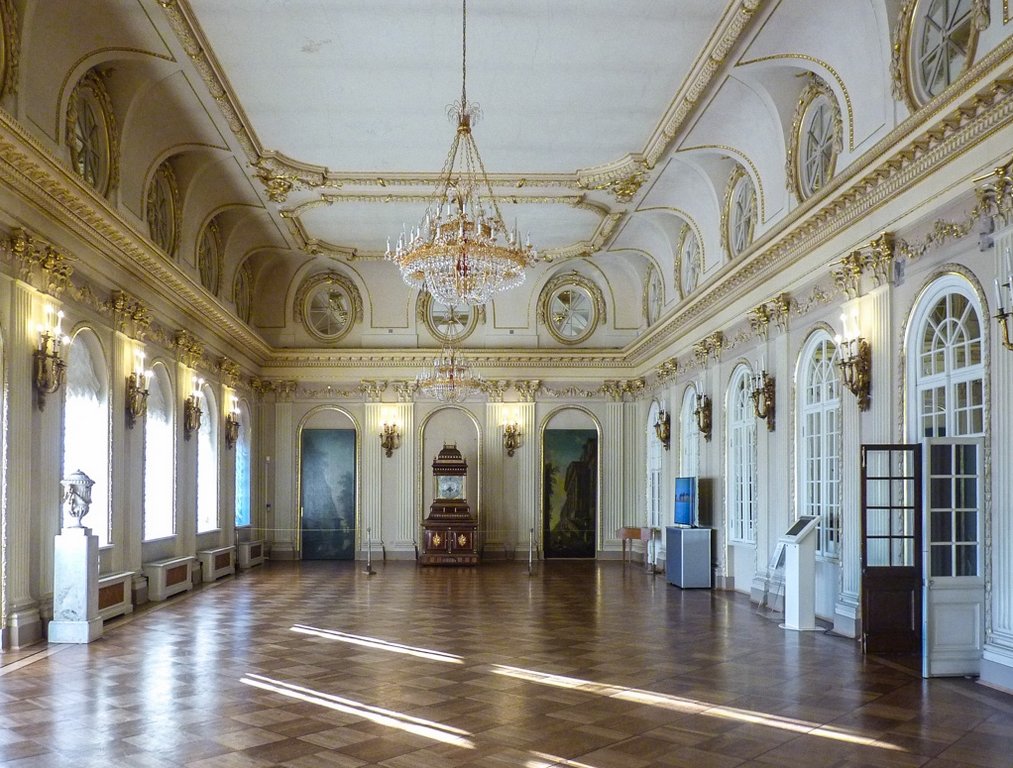
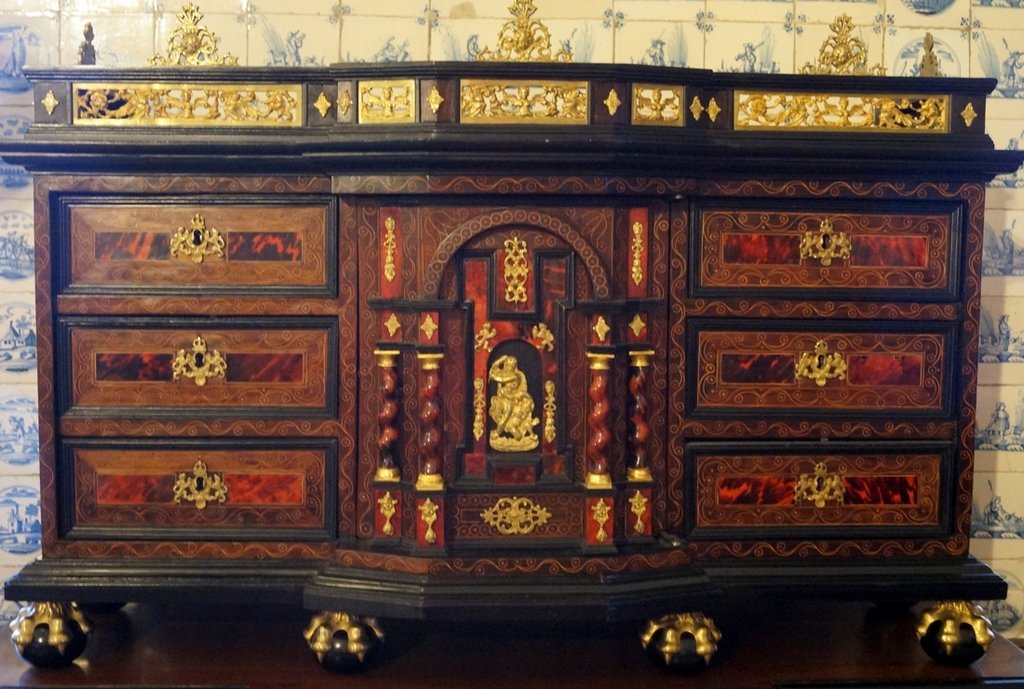
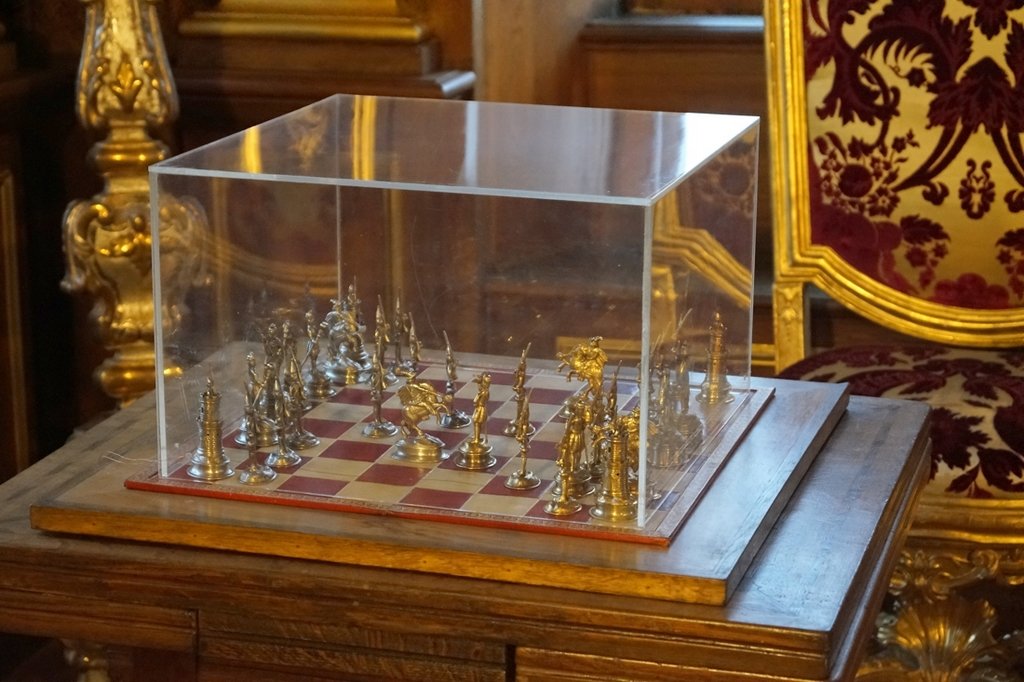
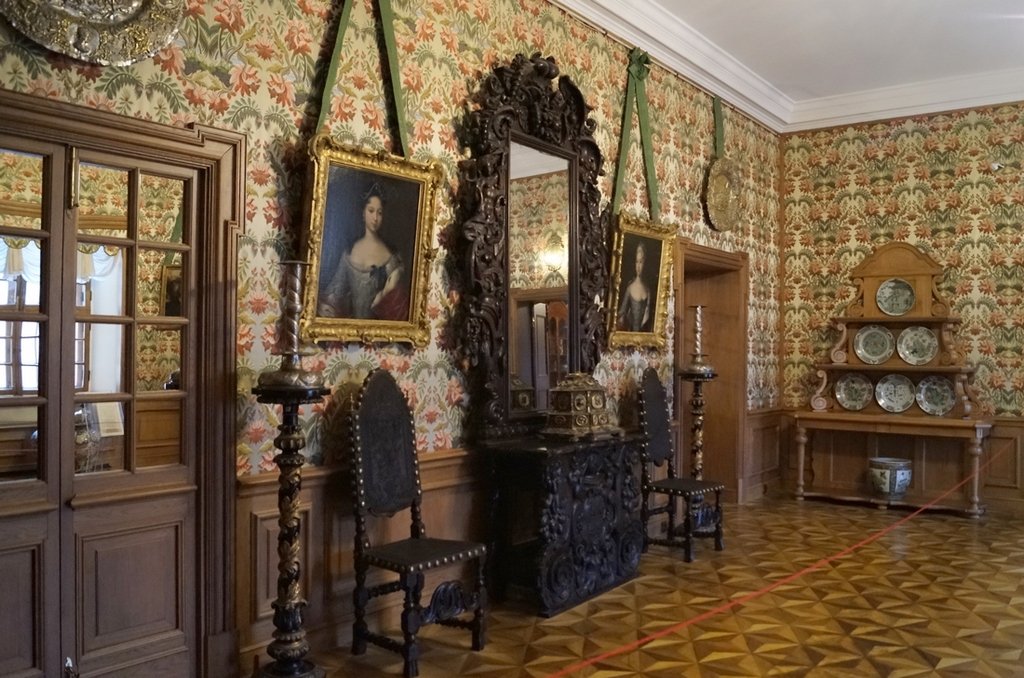
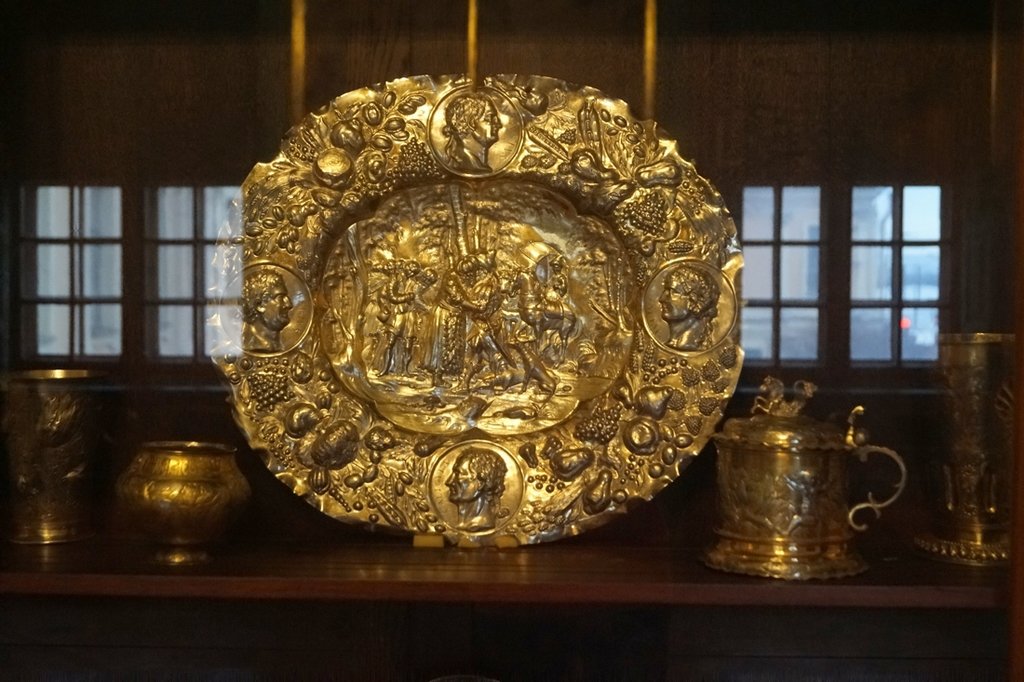
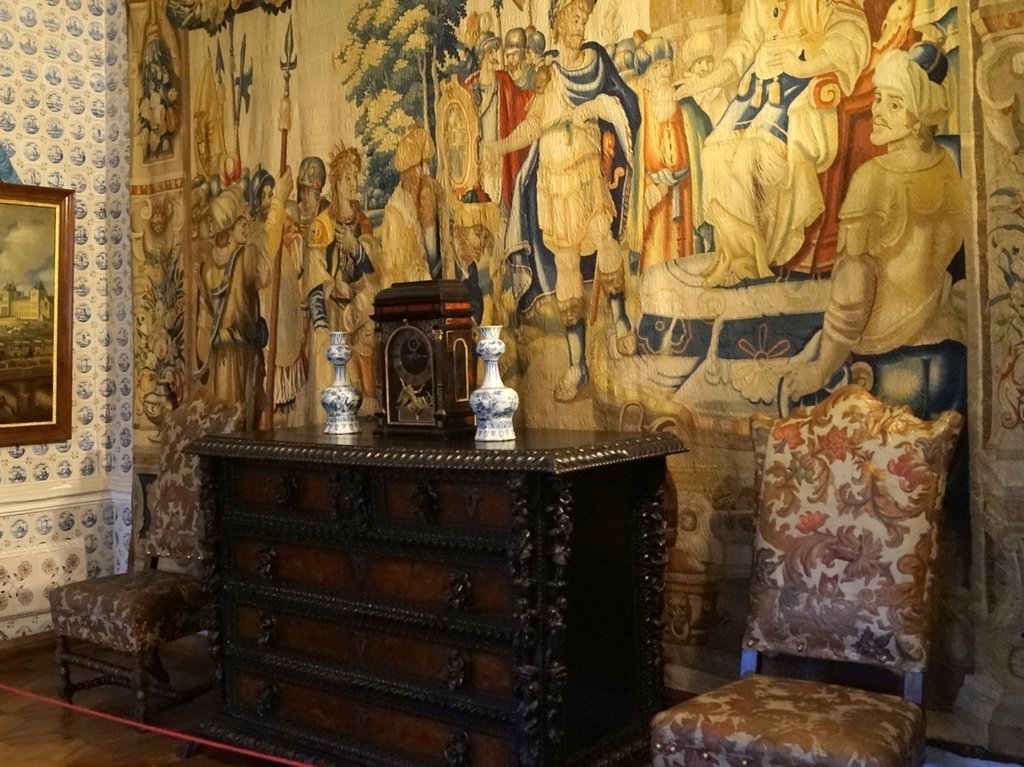
General Staff Building
The museum’s latest acquisition is two buildings united by a semicircular triumphal arch, a creation of architect Carlo Rossi in honor of the Russian Empire’s victory in the War of 1812. The new branch of the museum is a strict three-story building with elongated facades, the monotony of which is broken only by snow-white Corinthian colonnades. For many years, the General Staff served only an official function; now, representatives of military departments still sit in part of the building. At the moment the halls of the building are being reconstructed in accordance with the objectives of the museum – here will move part of the collections of European paintings from the Winter Palace.
.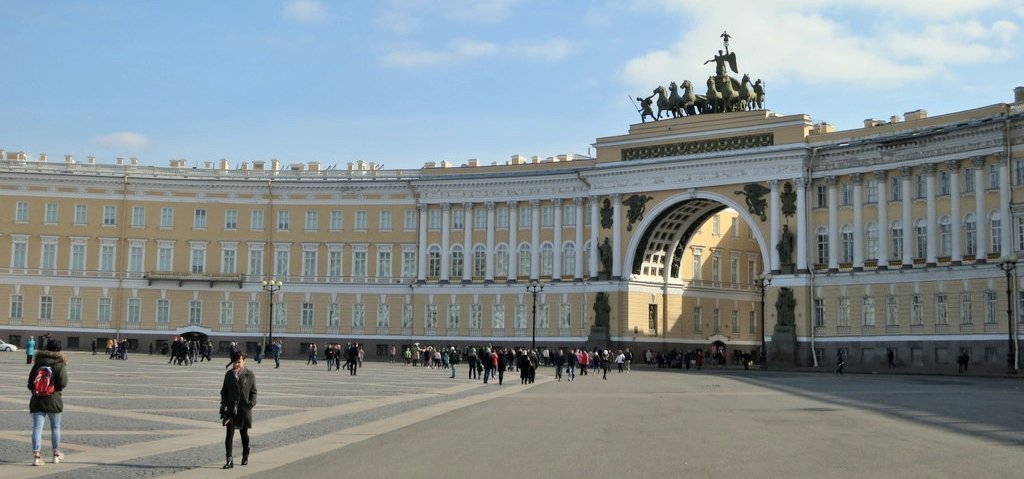
Tourists
The main part of the State Hermitage complex is located on Palace Square, north of the Admiralteyskaya metro station. The Hermitage Theater is separated from the Winter Palace and other buildings of the ensemble by the Winter Groove. To get to the Menshikov Palace, you need to cross the Neva River on the Palace Bridge and, passing the Kunstkamera, walk about half a kilometer southwest along the Universitetskaya Embankment. The Museum of the Imperial Porcelain Factory is located near the Lomonosovskaya metro station.
.
- Address: St. Petersburg, Palace Square, 2. .
- Телефон: +7(812)710-90-79
- Official website: www.hermitagemuseum.org .
Visiting times and ticket prices
A comprehensive ticket to see all the buildings of the Hermitage costs 400 rubles for citizens of the Russian Federation and Belarus, for guests from other countries – 700 rubles. Children, students, pensioners pass free of charge. Every third Thursday of the month the museum runs a promotion – a free day. In addition, you can visit the Hermitage free of charge on March 8 (for women), May 18 and December 7.
.At the height of the tourist season from May to October, visitors with Internet tickets enter the building through the Shuvalovsky passage from the side of Millionnaya Street to avoid queues at the ticket office. In addition to going through the “main turnstile,” the Hermitage has several other entrances for visitors with different types of tickets and groups. The museum is not open on Mondays, New Year’s Day and Victory Day.
.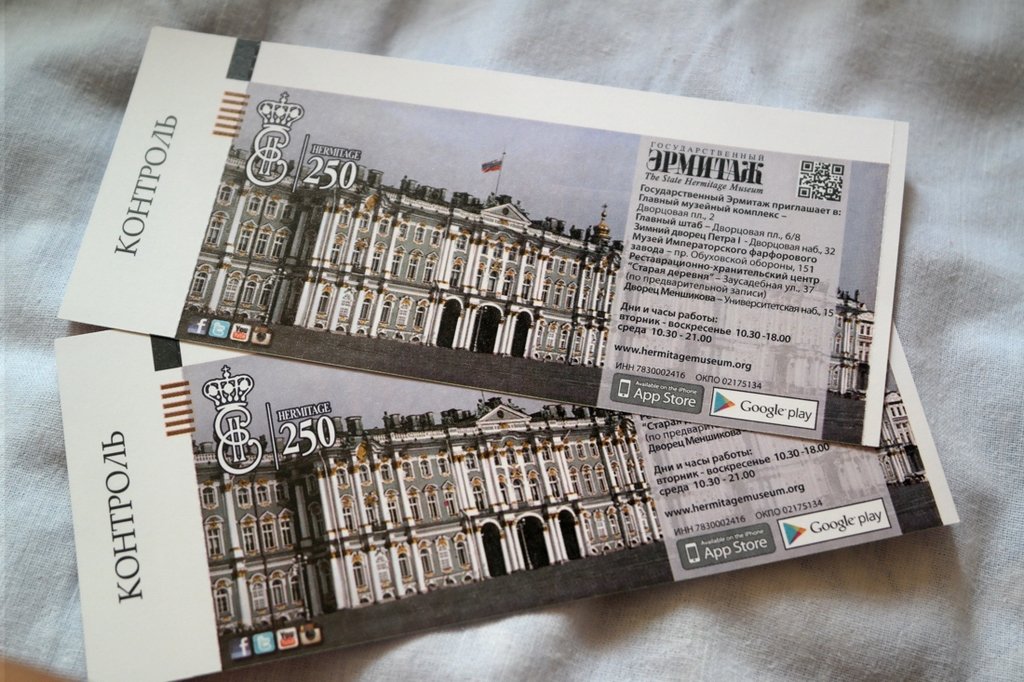
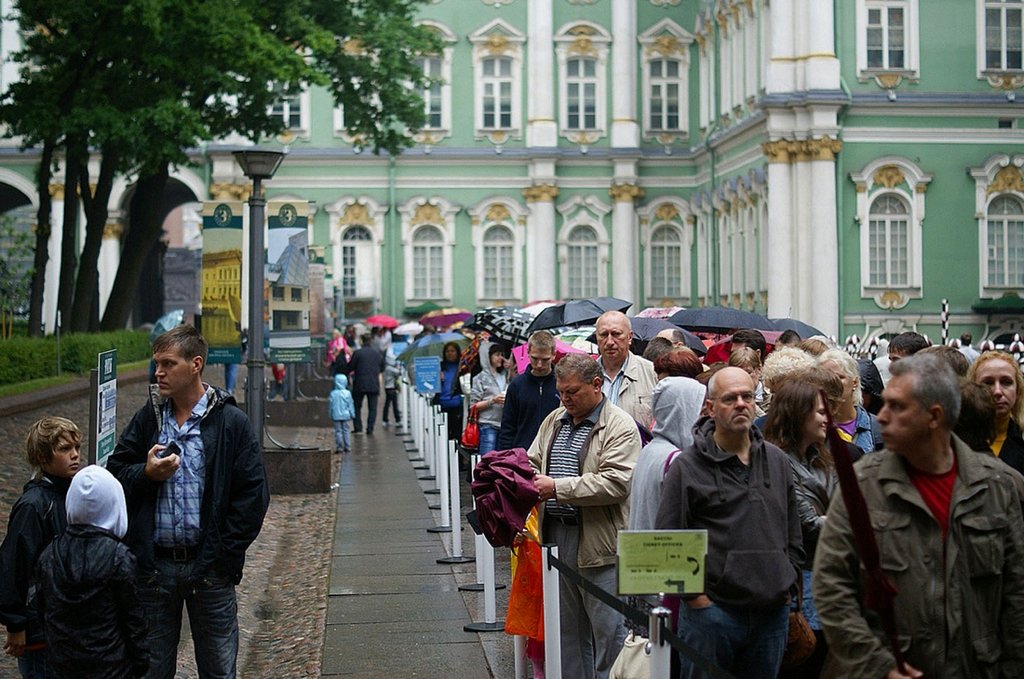
Educational programs of the museum
For children in the Hermitage there are quests, an art studio, clubs and circles, the themes of which are based on the school program. Thematic excursions are organized for adults, and virtual educational excursions for students and senior pupils. During school vacations, students are offered to visit the “Week of quests” with a dozen route sheets.
.